Inbox and Environment News: Issue 529
March 6 - 12, 2022: Issue 529
Avalon Beach 100 Years 100 Trees - Branching Out
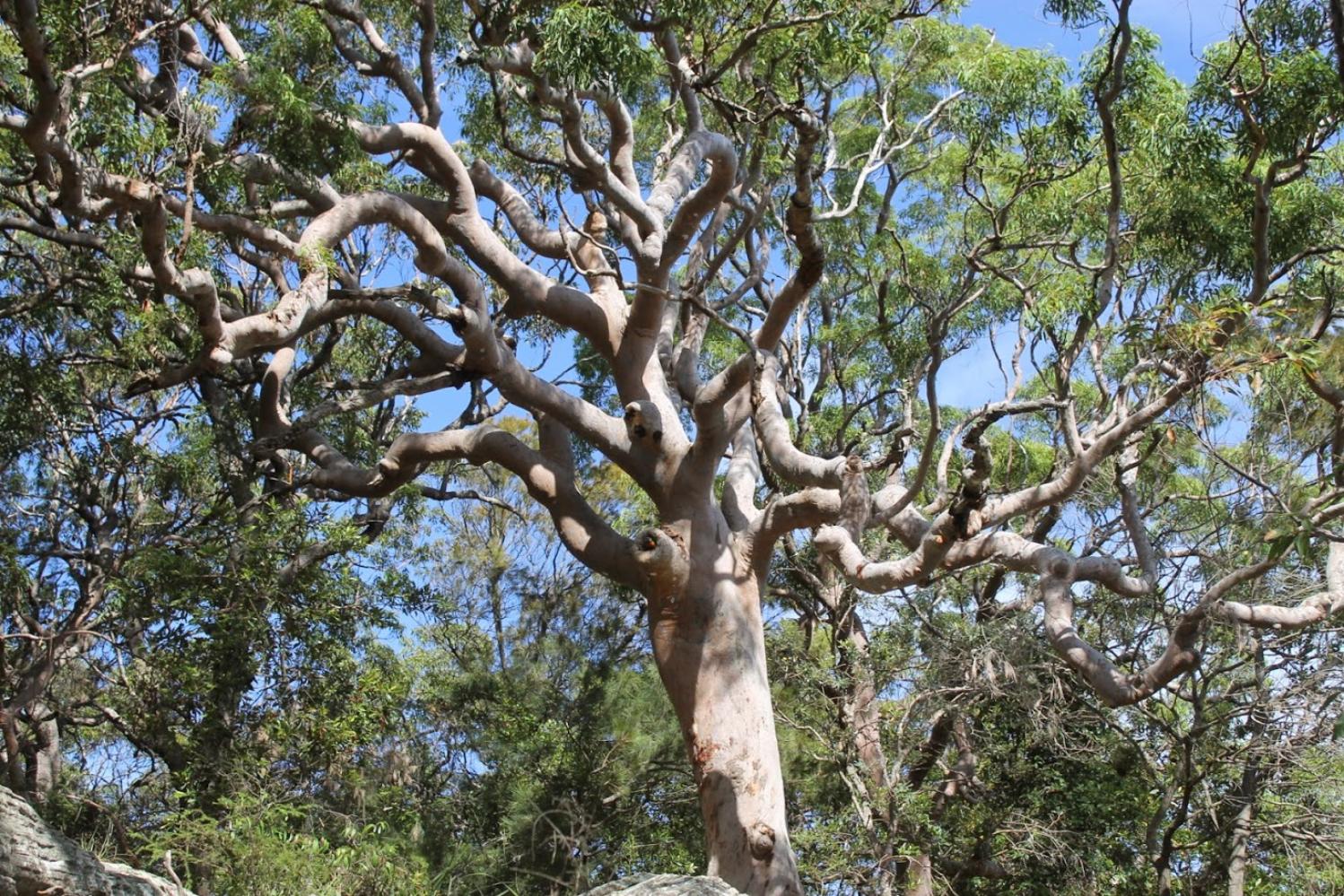
Canopy Keepers is back with another 100 native tubestock to give away later this month as Avalon Beach Centenary celebrations continue - but this time the group is branching out to residents across Pittwater.
CK spokesperson Deb Collins said the group had been delighted with the response to its first offering of 100 trees at the opening of celebrations for the naming of Avalon Beach on December 4, with residents claiming more than 120 young plants.
“This time we're branching out, spreading the love wider, and inviting new Canopy Keepers from Narrabeen to Palm Beach, from The Basin to Scotland Island to join us in strengthening our precious canopy,” Ms Collins said.
“Did you know that for canopy trees and wildlife to thrive they need an understorey and ground cover and that eucalypts grow better with wattles nearby ?
“So whether you have room for a tall, mid storey or ground cover plant, please sign up, then come and meet us on this auspicious autumn day so you can take home a plant to support our canopy.”
Ms Collins asked those interested to please register online using the link below. The deadline for signing up for a tree is noon on March 12 - although some stock will be available on the day.
“Then find us at Dunbar Park to collect your tubestock on Saturday March 19 under our own canopy,” she said.
“We’ll have knowledgeable people on hand to help you with the best choice of tree for your location.”
Canopy Keepers thanks the Northern Beaches Council for its support of this initiative.
To sign up in advance for a tree please go to this link: https://forms.gle/McoPQYybHxXN9fQy6
To make enquiries please email 100trees@canopykeepers.org.au
To learn more about Canopy Keepers go to www.canopykeepers.org.au and sign up for our newsletter.
For general enquires about the March 19 program, please email Ros Marsh at asmallbizminder@bigpond.com
VALE Colin (Col) Dudgeon
1932-2021
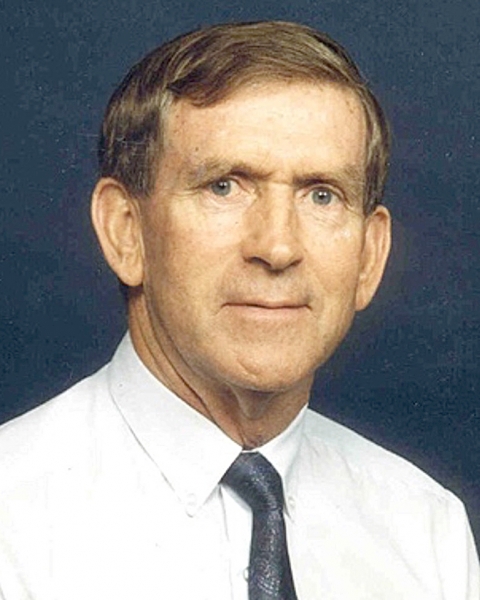
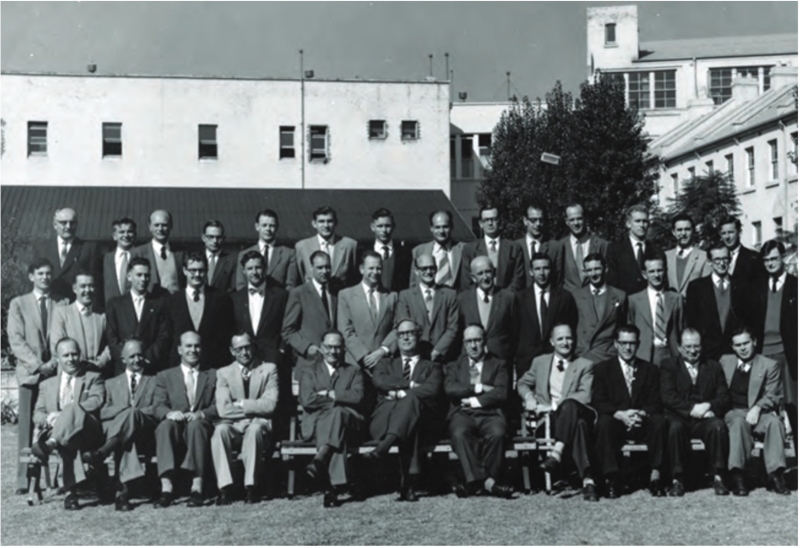
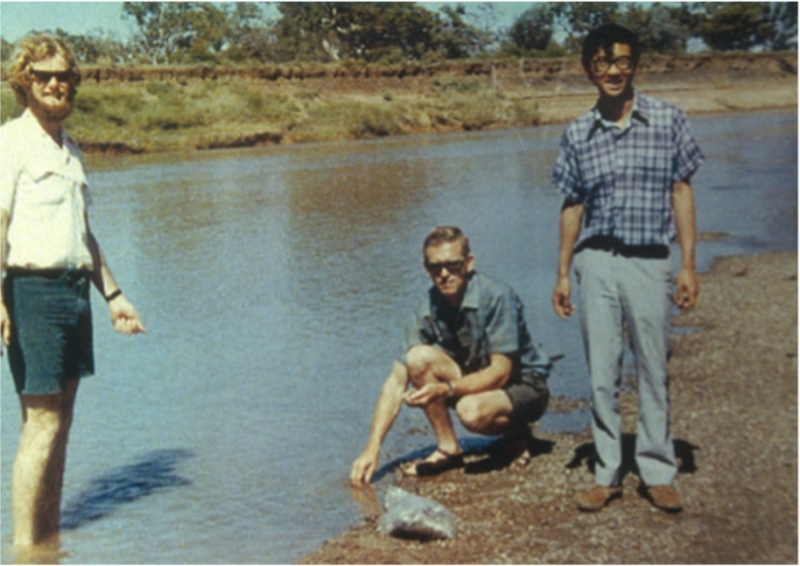
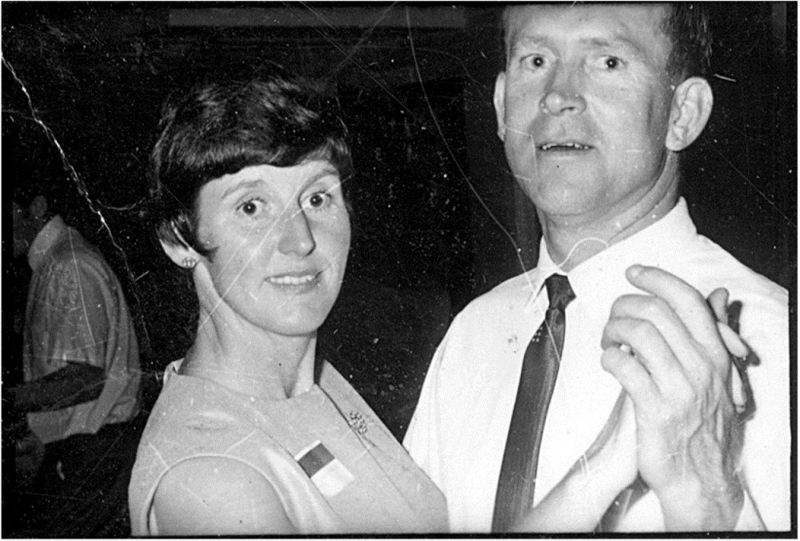
NSW Councils Congratulated On Resolution To Get Off Gas
Local Wildlife Rescuers And Carers State That Ongoing Heavy Rains Are Tough For Us But Can Be Tougher For Our Wildlife:
- Birds and possums can be washed out of trees, or the tree comes down, nests can disintegrate or hollows fill with water
- Ground dwelling animals can be flooded out of their burrows or hiding places and they need to seek higher ground
- They are at risk crossing roads as people can't see them and sudden braking causes accidents
- The food may disappear - insects, seeds and pollens are washed away, nectar is diluted and animals can be starving
- They are vulnerable in open areas to predators, including our pets
- They can't dry out and may get hypothermia or pneumonia
- Animals may seek shelter in your home or garage.
You can help by:
- Keeping your pets indoors
- Assessing for wounds or parasites
- Putting out towels or shelters like boxes to provide a place to hide
- Drive to conditions and call a rescue group if you see an animal hit (or do a pouch check or get to a vet if you can stop)
- If you are concerned take a photo and talk to a rescue group or wildlife carer
There are 2 rescue groups in the Northern Beaches:
Sydney Wildlife: 9413 4300
WIRES: 1300 094 737
Please be patient as there could be a few enquiries regarding the wildlife.
Generally Sydney Wildlife do not recommend offering food but it may help in some cases. Please ensure you know what they generally eat and any offerings will not make them sick. You can read more on feeding wildlife here
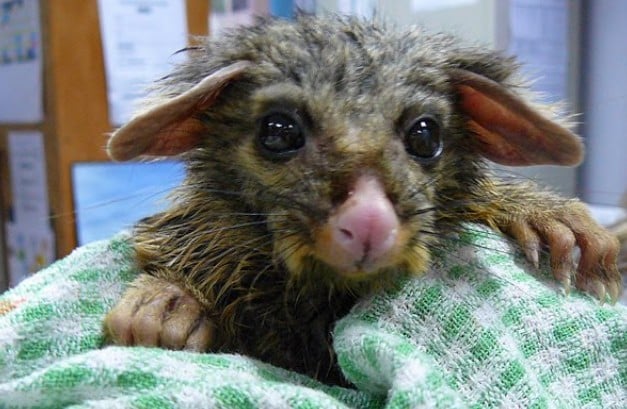
Information courtesy Ed Laginestra, Sydney Wildlife volunteer. Photo: from Esther Andrews.
Stronger Environmental Laws To Hold Waste Criminals And Polluters To Account
- Ensuring current and former directors of corporate bodies are held responsible for their crimes, even if they’ve set up and then dissolved companies (phoenixing) to deflect accountability
- Holding to account related companies that benefit from a crime both financially, and in future licensing decisions
- Acting against the owners of vehicles involved in illegal waste dumping (the Act previously only applied to the driver of a vehicle)
- Ensuring that if land is subdivided or sold, or if a licence is surrendered, the ongoing management of contaminated sites is maintained and not left to government or innocent landholders to manage
- New and increased maximum penalties, to further deter criminal behaviour
- Increased protections for officers investigating environmental offences so they can do their jobs safely.
Aviaries + Possum Release Sites Needed

Australia’s Eucalypt Of The Year Voting Is Open For The 5th Year!
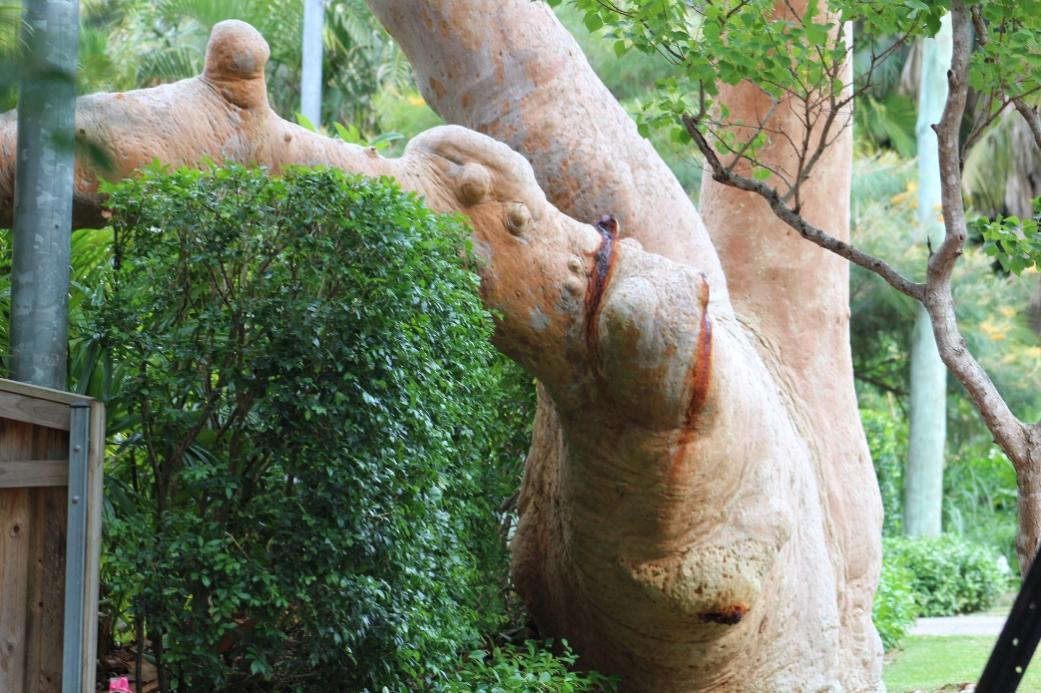
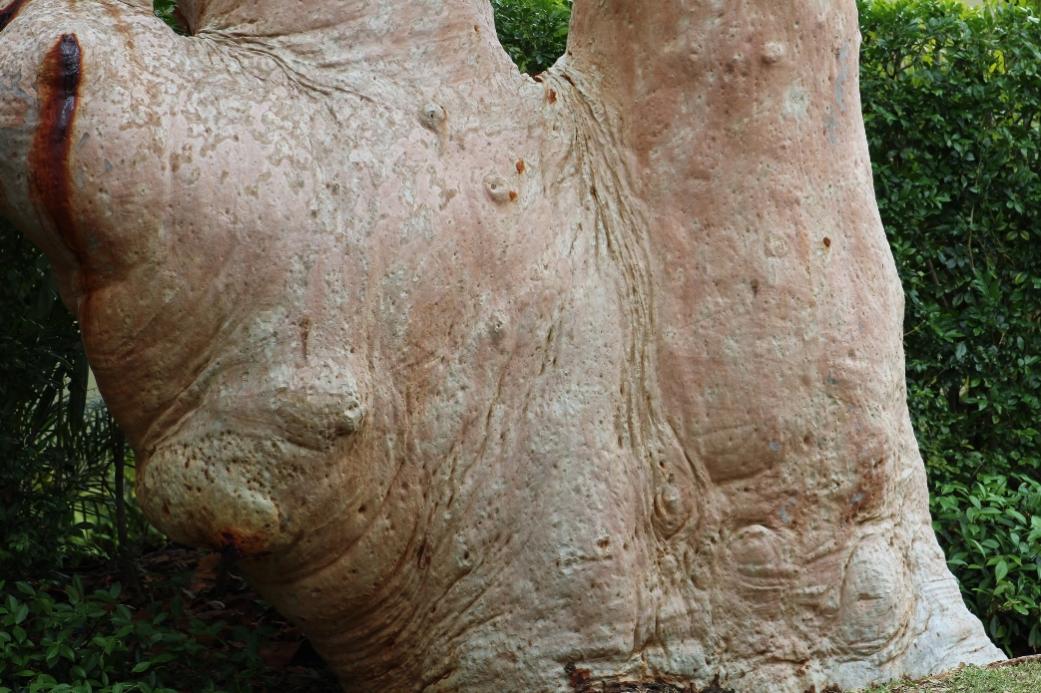
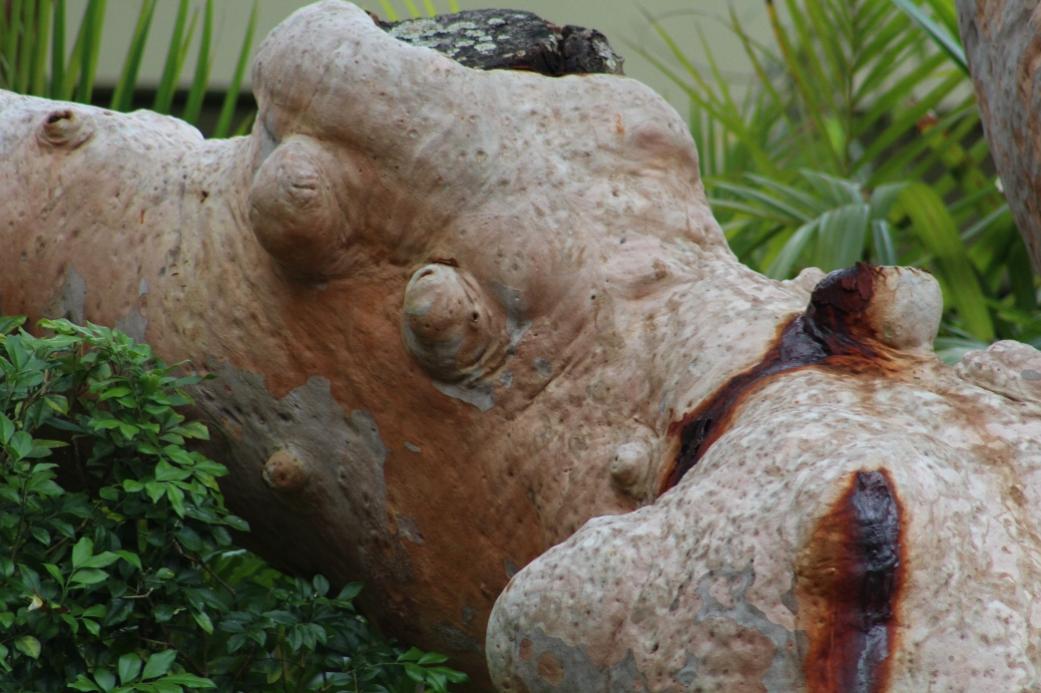
Clean Up Australia Day: Sunday March 6 2022 - Local Sites List
- Committed to making a positive difference to the community and environment: activities should be inspiring, engaging and respectful of the local community.
- A volunteer movement: people cannot be charged to be involved in activities nor can activities be conducted for commercial or financial gain.
- Committed to the safety of volunteers: activities must be carried out in accordance with the local laws and regulations relevant to the activity.
- Uniting communities as part of a national campaign: participants must respect the presence and activities of other participants in their proximity.
- Welcoming to communities of all nations, cultures, races and faiths: participants and activities must respect political, cultural, and religious differences and beliefs
- Non-partisan: participants and activities must not imply endorsement of partisanship by Clean Up Australia.
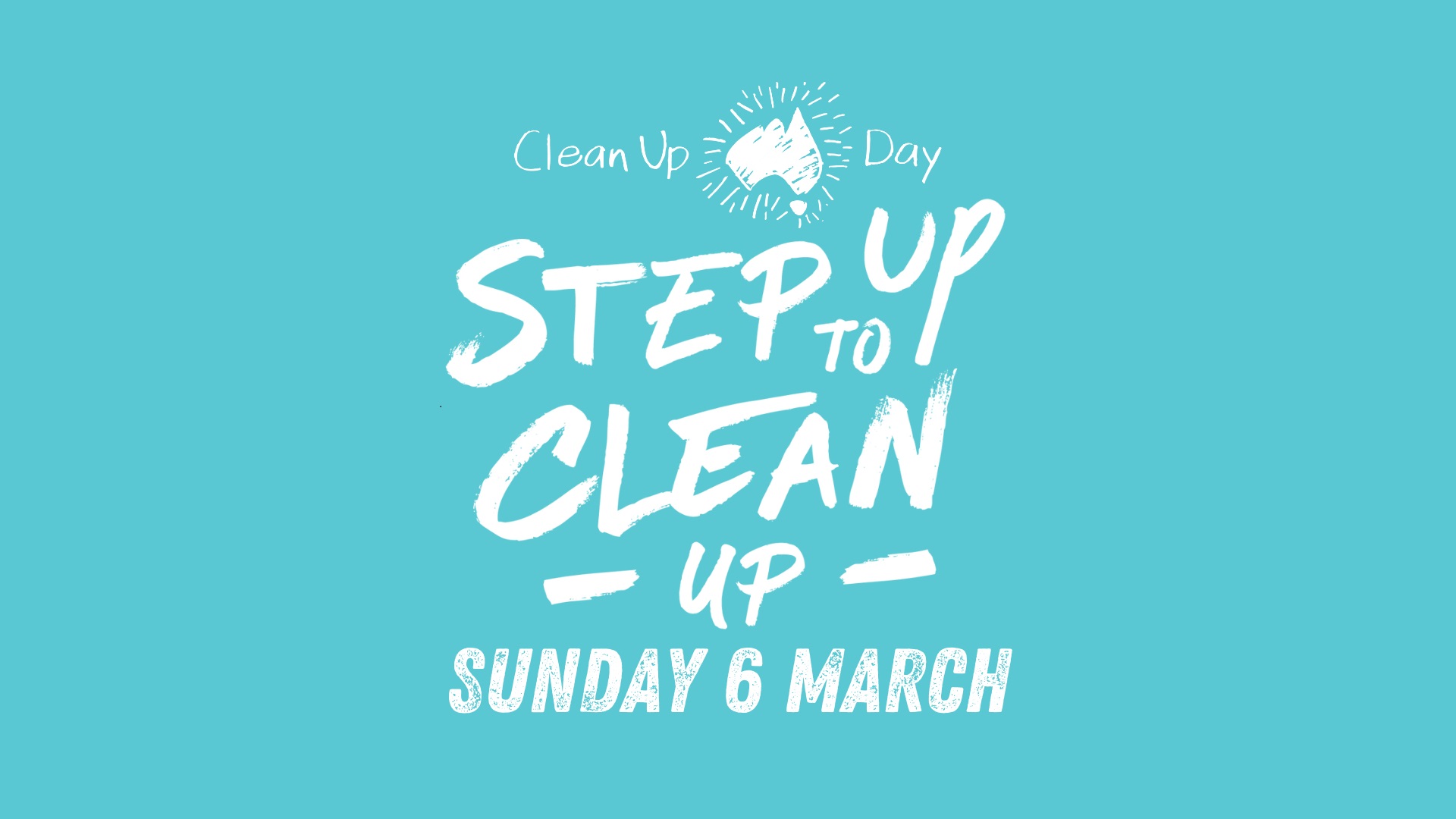
Asparagus Fern Flowering Now: Dispose Of This Weed To Stop The Spread
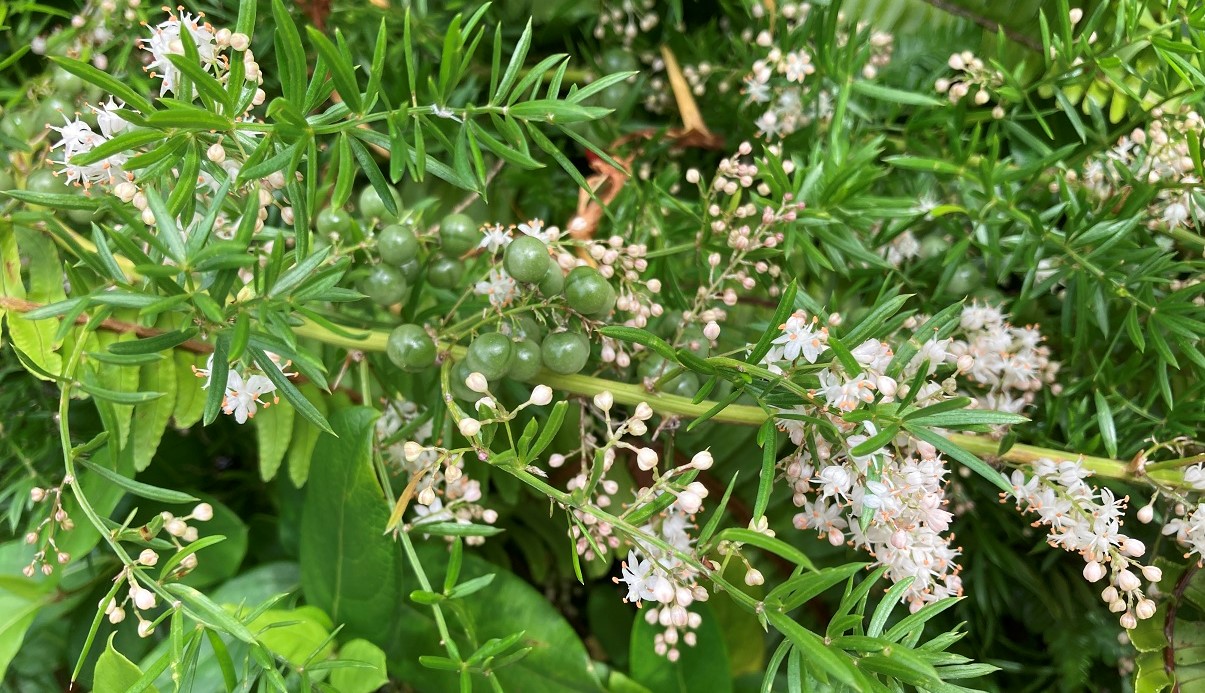
Sulphur-Crested Cockatoo (Cacatua Galerita) Feeding Young
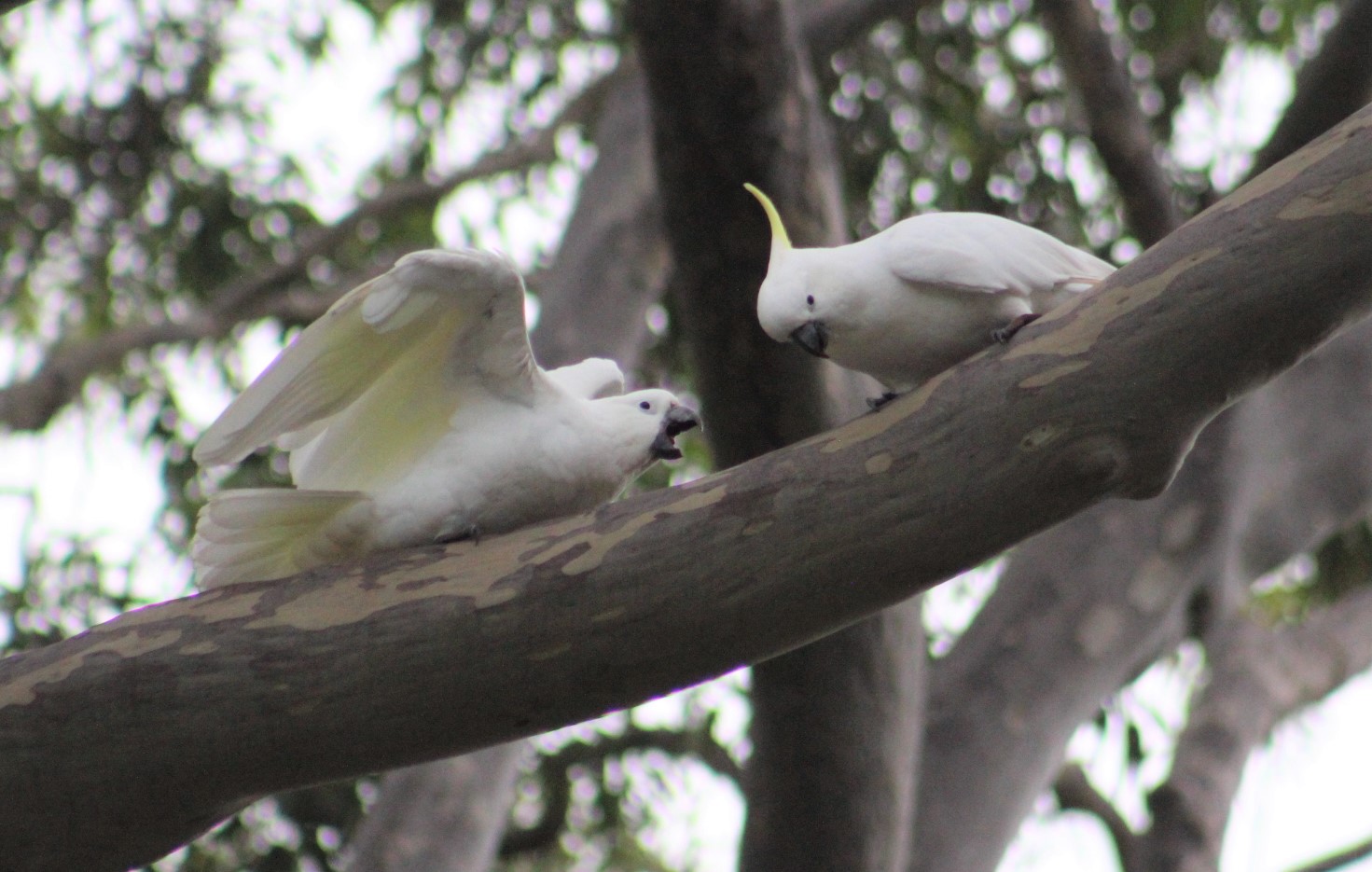
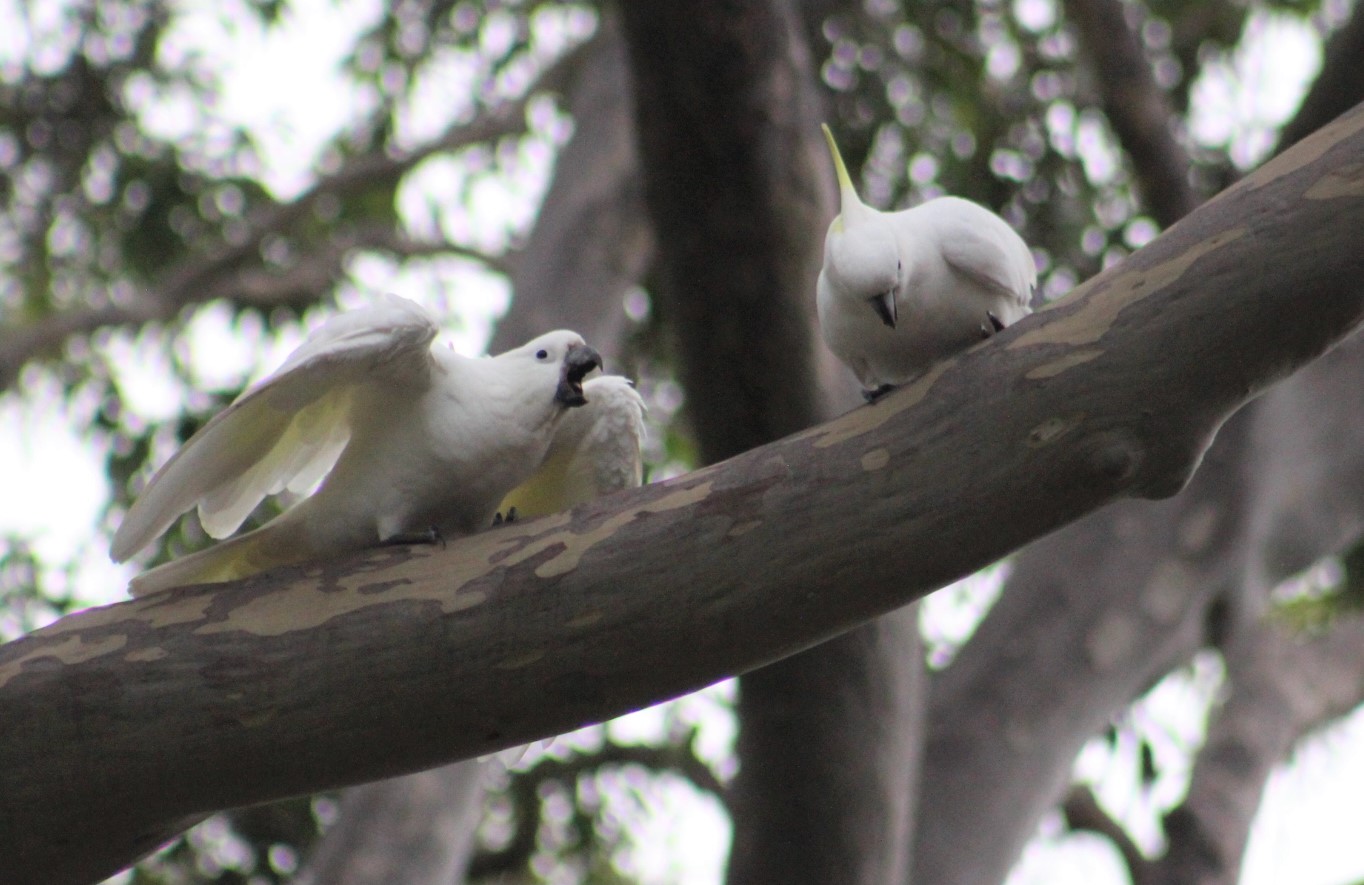
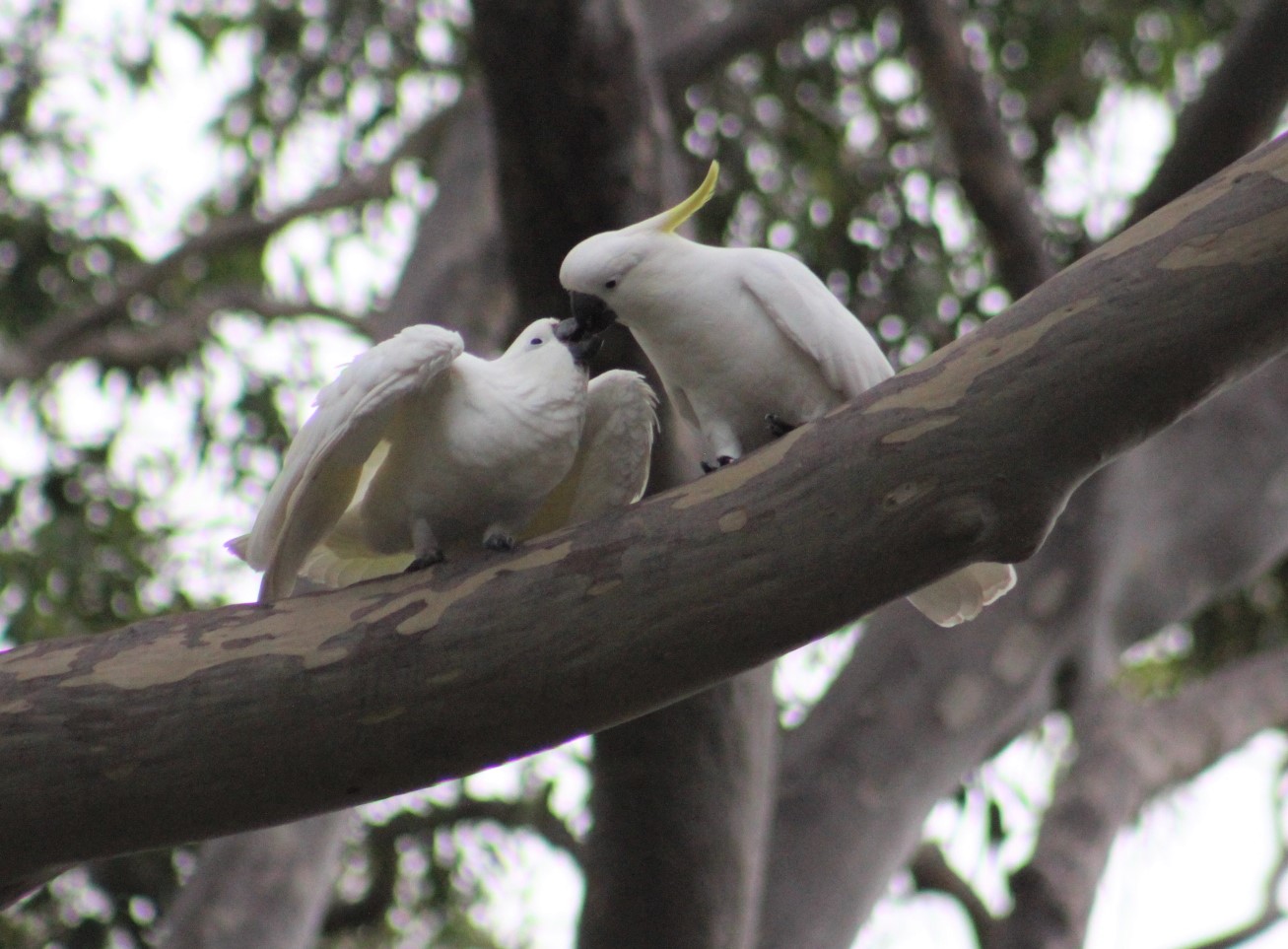
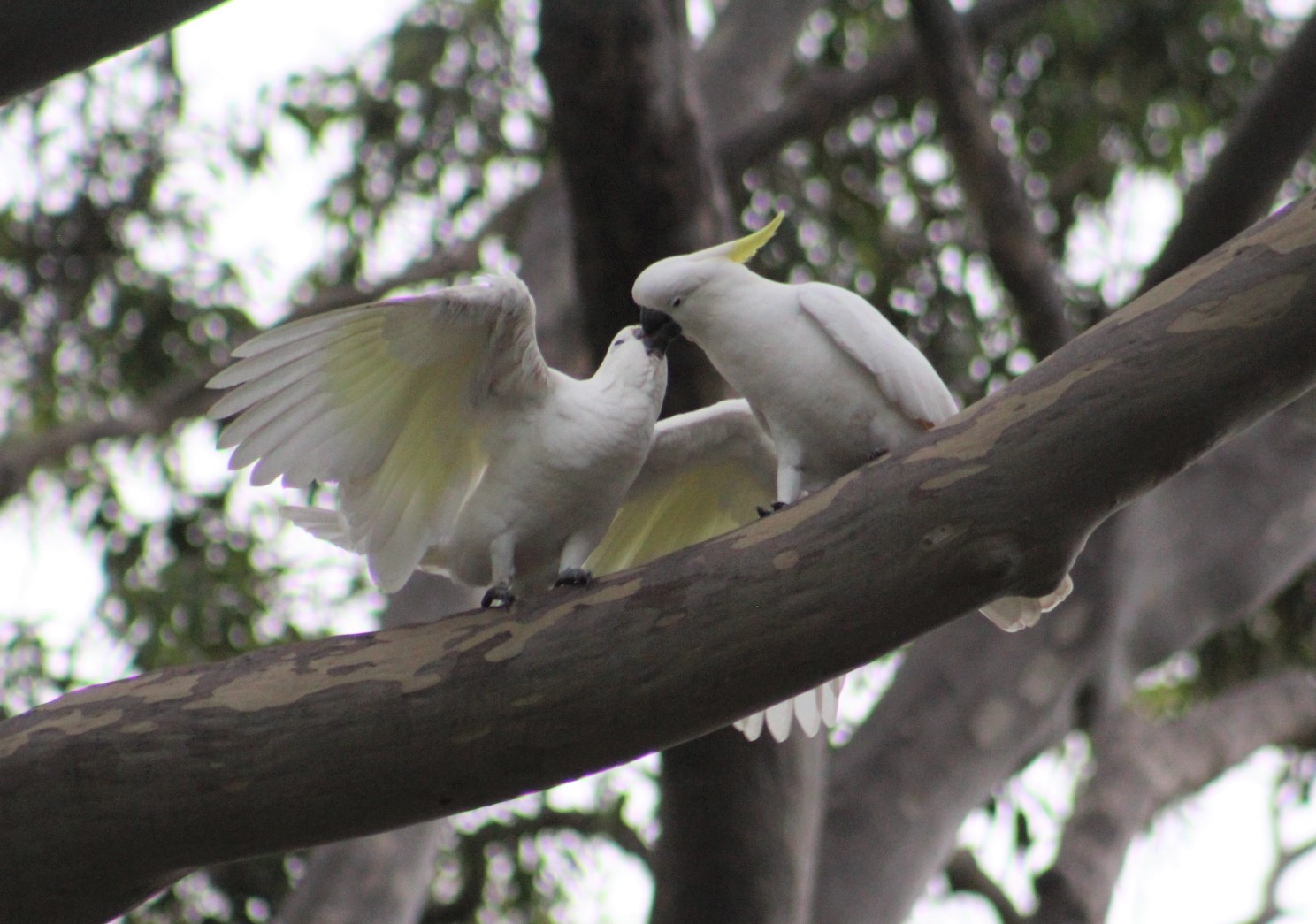
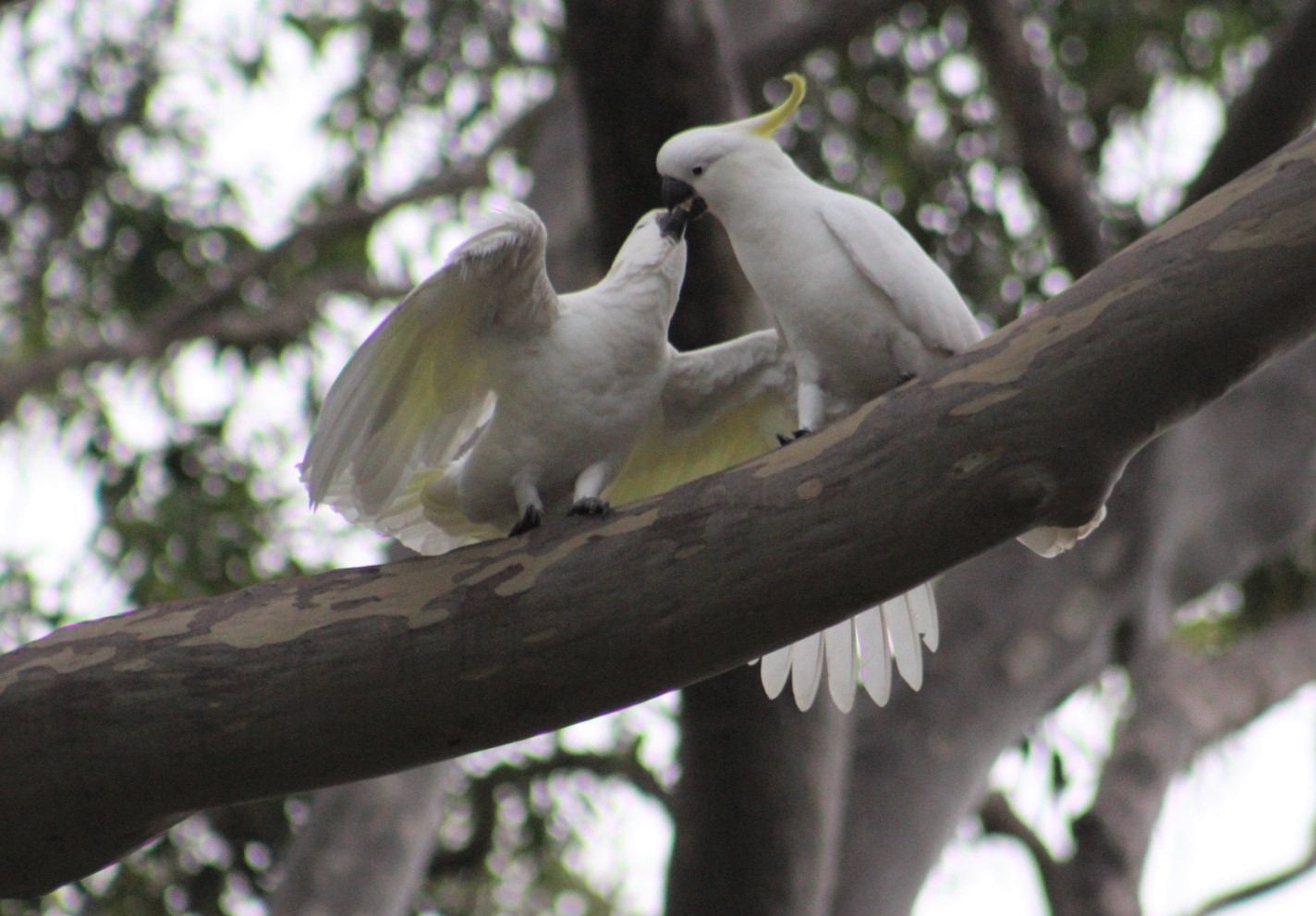
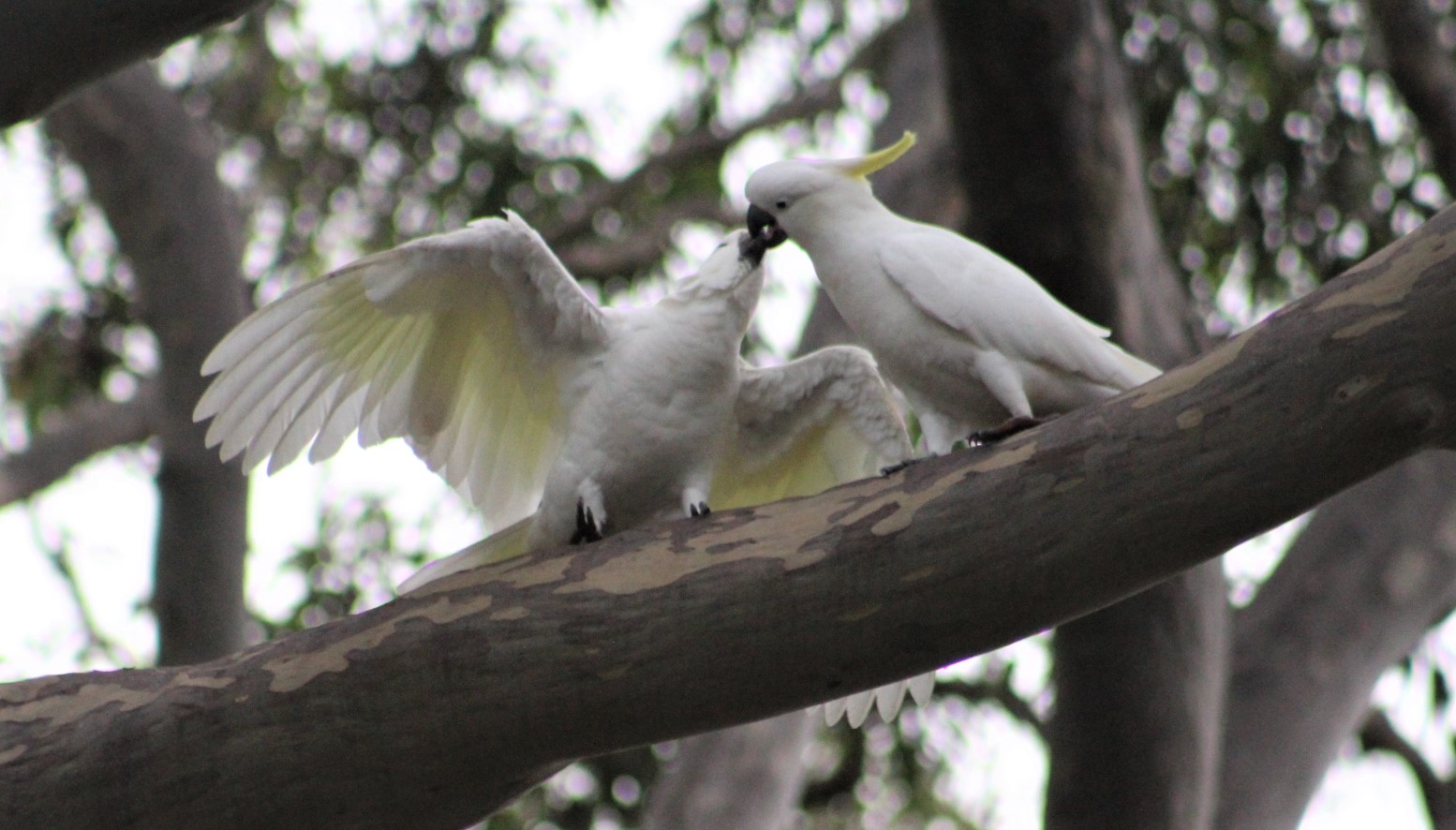
Assets Of Intergenerational Significance Conservation Action Plans Consultation
- 77 threatened plant species, including the previously declared Wollemi pine
- 30 threatened animal species
- 6 locally extinct mammals which have been reintroduced to 3 of the feral predator-free fenced areas
- 1 newly described species, the Wollumbin pouched frog recently discovered in Wollumbin National Park.
- the environmental and cultural values of the land
- key risks to those values
- management activities to address and mitigate the risks – such as dedicated feral animal control or fire management
- actions to measure and report on the health and condition of the declared value.
Floodplain Development Manual Update: Feedback Until April 7
- Lessons learned from previous floods and the application of a flood risk management process and manual since 2005.
- A range of work on managing natural hazards across government, including relevant national and international frameworks, strategies, and best practice guidance.
- A Flood Risk Management Manual.
- A range of new flood risk management guides for the Flood Risk Management Toolkit.
Connecting To Country With Environmental Outcomes: POP Grants Open
Japanese Encephalitis Virus Detected In Samples From Piggeries
- Pregnant sows and gilts may abort, produce mummified or malformed foetuses, or give birth to stillborn or weak piglets at term,
- Infertility in boars - this is most commonly temporary but may be permanent if the boar is severely affected.
- Nervous signs such as tremors and convulsions are occasionally seen in pigs up to 6 months of age.
Get The Timing Right To Manage Rabbits
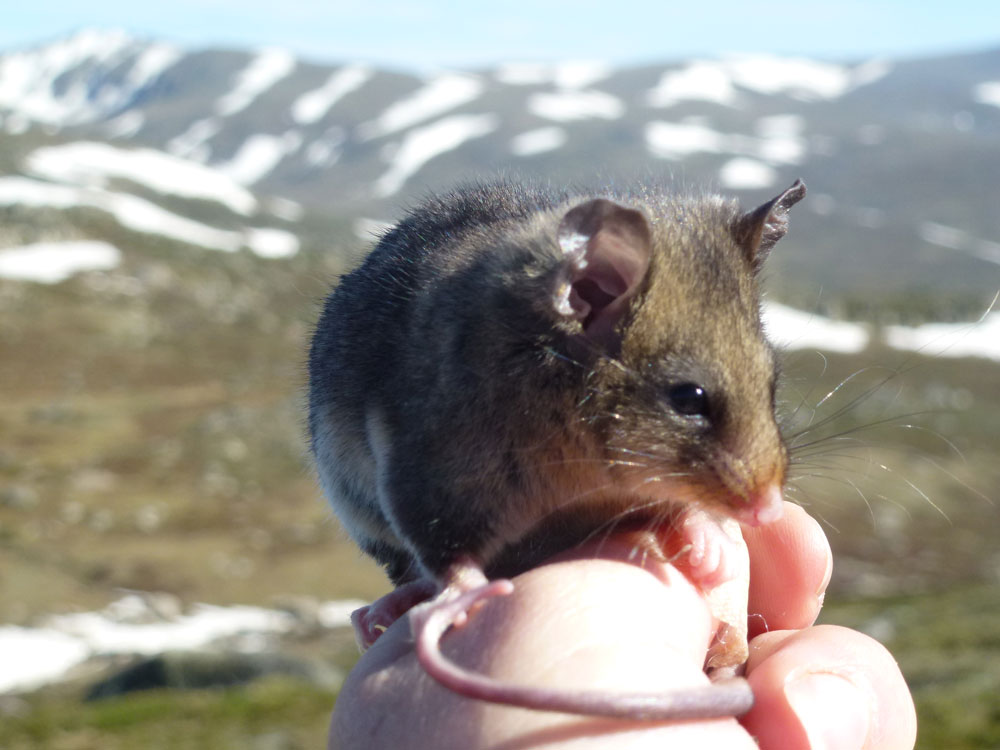
The Big Switch With Saul Griffith: Electrify Everything!
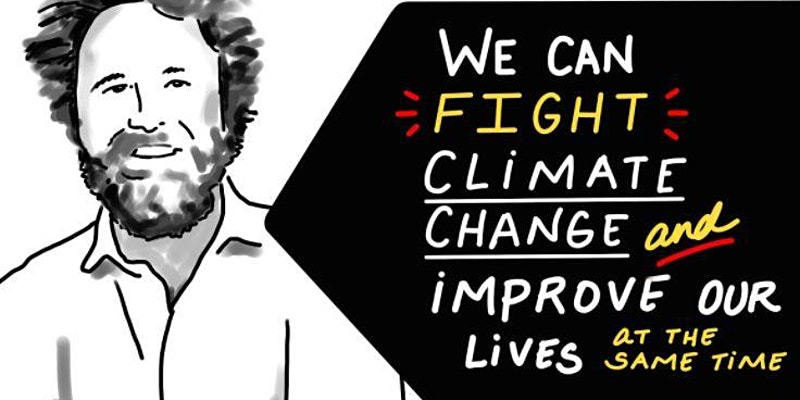 When: Wed, 23 March 2022; 6:30 PM – 8:00 PM
When: Wed, 23 March 2022; 6:30 PM – 8:00 PM Bushcare In Pittwater
Where we work Which day What time
Avalon
Angophora Reserve 3rd Sunday 8:30 - 11:30am
Avalon Dunes 1st Sunday 8:30 - 11:30am
Avalon Golf Course 2nd Wednesday 3 - 5:30pm
Careel Creek 4th Saturday 8:30 - 11:30am
Toongari Reserve 3rd Saturday 9 - 12noon (8 - 11am in summer)
Bangalley Headland 2nd Sunday 9 to 12noon
Bayview
Winnererremy Bay 4th Sunday 9 to 12noon
Bilgola
North Bilgola Beach 3rd Monday 9 - 12noon
Algona Reserve 1st Saturday 9 - 12noon
Plateau Park 1st Friday 8:30 - 11:30am
Church Point
Browns Bay Reserve 1st Tuesday 9 - 12noon
McCarrs Creek Reserve Contact Bushcare Officer To be confirmed
Clareville
Old Wharf Reserve 3rd Saturday 8 - 11am
Elanora
Kundibah Reserve 4th Sunday 8:30 - 11:30am
 Mona Vale
Mona Vale Mona Vale Beach Basin 1st Saturday 8 - 11am
Mona Vale Dunes 2nd Saturday +3rd Thursday 8:30 - 11:30am
Newport
Bungan Beach 4th Sunday 9 - 12noon
Crescent Reserve 3rd Sunday 9 - 12noon
North Newport Beach 4th Saturday 8:30 - 11:30am
Porter Reserve 2nd Saturday 8 - 11am
North Narrabeen
Irrawong Reserve 2nd Saturday 2 - 5pm
Palm Beach
North Palm Beach Dunes 3rd Saturday 9 - 12noon
Scotland Island
Catherine Park 2nd Sunday 10 - 12:30pm
Elizabeth Park 1st Saturday 9 - 12noon
Pathilda Reserve 3rd Saturday 9 - 12noon
Warriewood
Warriewood Wetlands 1st Sunday 8:30 - 11:30am
Whale Beach
Norma Park 1st Friday 9 - 12noon
Western Foreshores
Coopers Point, Elvina Bay 2nd Sunday 10 - 1pm
Rocky Point, Elvina Bay 1st Monday 9 - 12noon
Gardens And Environment Groups And Organisations In Pittwater
Sydney Wildlife Rescue: Helpers Needed
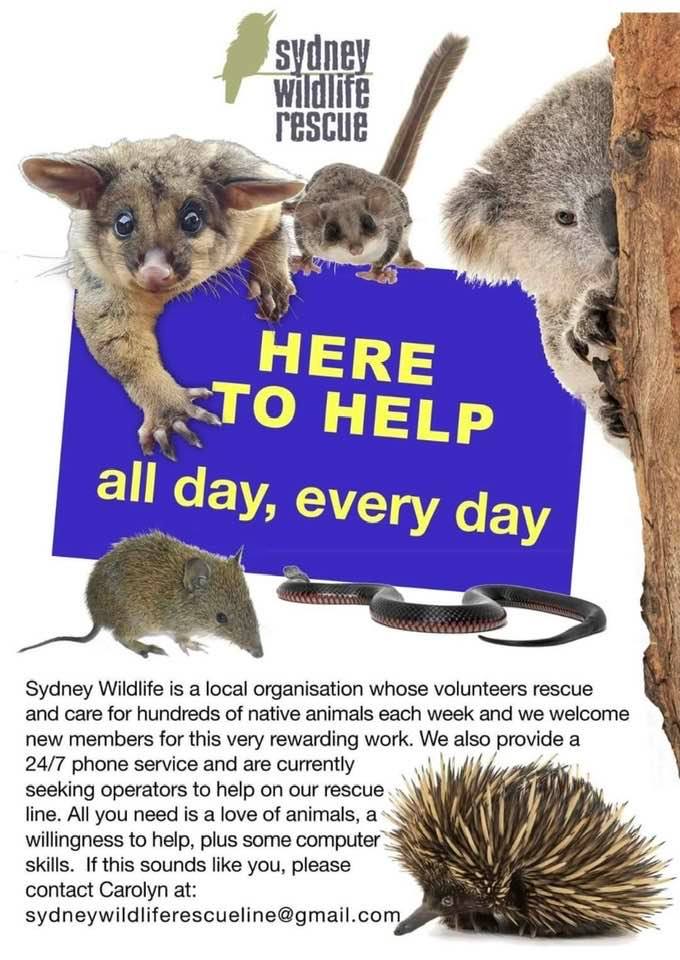
Reintroduced Mammals Thriving In Sturt National Park
Sustainable Solutions For Ghost Net Waste
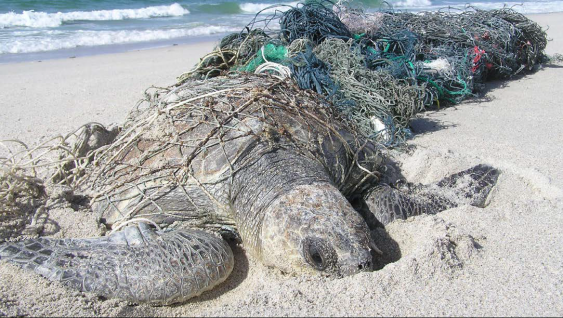
- For ghost nets and marine debris in northern Australia, self-sustaining solutions are critical.
- Reducing reliance on government support to clean-up and dispose of the debris is dependent upon being able to produce high quality products made from waste that reflect the unique cultures in the region.
- Consolidation of different waste streams within regions for more efficient transportation and processing will be important to achieve economies of scale.
- Re-manufacturing and to a lesser extent extrusion and injection moulding are considered the most feasible options for using the waste as a resource.
- Undertaking a pilot program to establish a recycling pathway for the Gulf of Carpentaria including establishing regional hubs for sorting and aggregation of marine debris and ghost nets and trialling cost effective logistical transportation and re-processing solutions.
Effects Of Noise On Marine Life: Study Finds That Turtles Are Among Animals Vulnerable To Hearing Loss
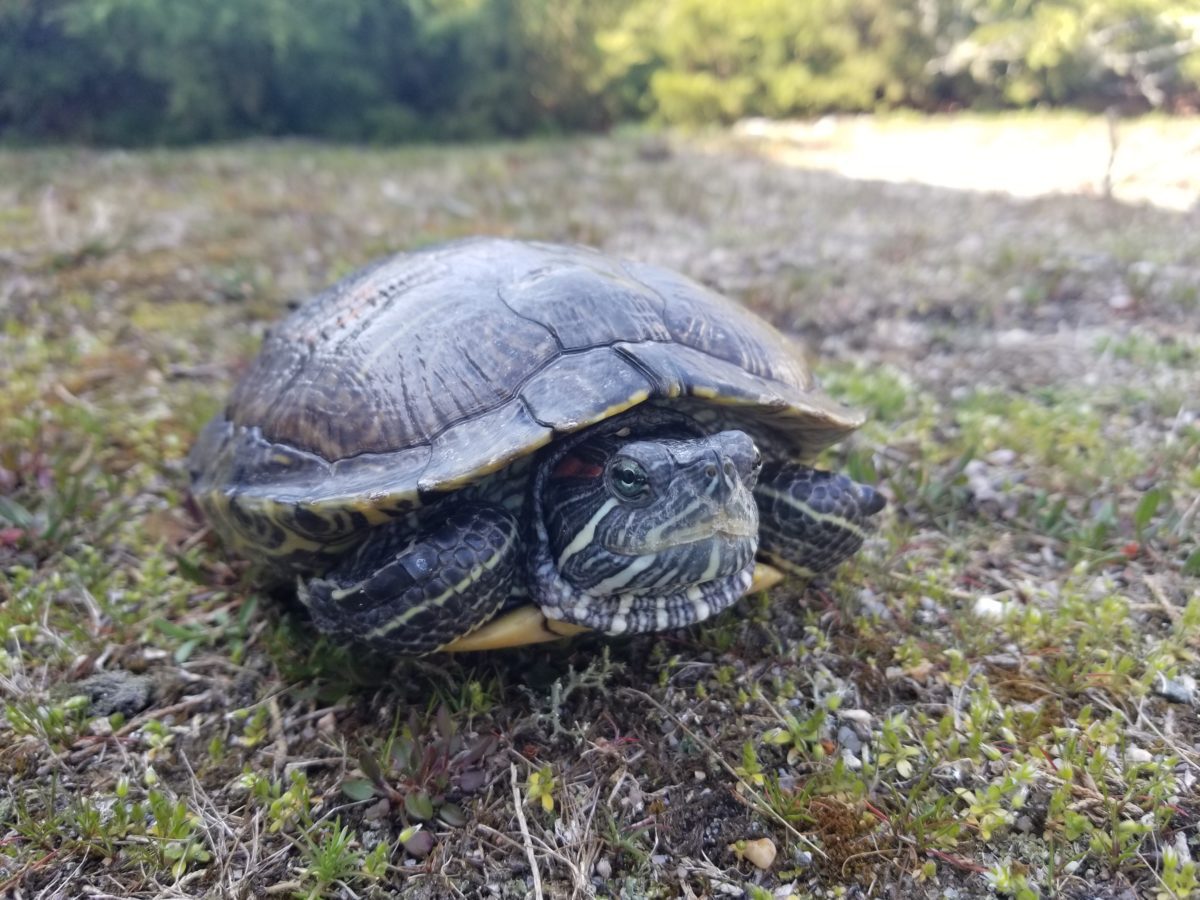
Water Allocations May Leave NT River High And Dry: Study
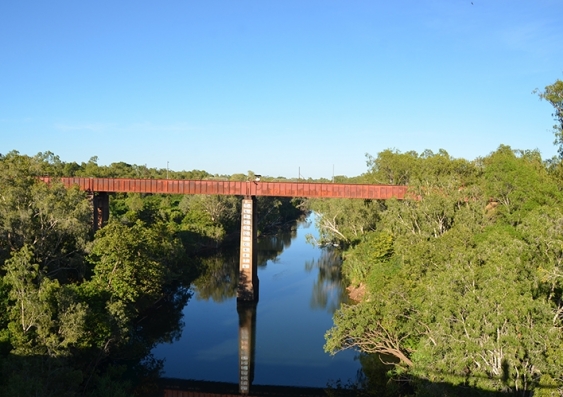
Pitt’s Millions For Fracking Companies Threaten Land And Water
Emissions Reduction Fund Contracts Changes
- Since optional delivery contracts were first offered in 2020, average auction volumes have increased fourfold - more than 20 million tonnes have been contracted across the last three auctions (2020-21), compared to five million tonnes for the three preceding auctions (2018-20).
- Project proponents overwhelmingly prefer optional delivery contracts – since March 2020, 95 per cent of contracted volume has been optional rather than fixed. At the most recent auction (October 2021), no fixed delivery contracts were taken up.
- The ERF will deliver a higher volume of abatement than originally forecast – through optional delivery contracts, the Government can underwrite a larger number of ERF projects to deliver more abatement towards Australia’s 2030 Paris and 2050 net zero targets.
- Establish a new exchange platform for emissions reduction units, saving businesses an estimated $100 million by 2030;
- Halve timeframes for ERF project registration and crediting through streamlined digital infrastructure, so businesses can earn a return on projects more quickly; and
- Slash the time it takes to develop new methods so businesses can take advantage of new opportunities to reduce emissions, increasing the rate of new methods from one per year to five per year.
- Application and conditional approval: Contract holders will be eligible to apply to be released from eligible delivery milestones ahead of each window. If found eligible, the Clean Energy Regulator will provide conditional approval, an invoice for the exit fee, and payment instructions.
- Exit fee payment and milestone cancellation: The exit fee must be paid by the delivery milestone due date. When payment is confirmed, the delivery obligation will be cancelled.
Farmers Fear For Future Of Darling Downs With Coal Seam Gas Close To Crossing Condamine River
Like rivers in the sky: the weather system bringing floods to Queensland will become more likely under climate change
Kimberley Reid, The University of Melbourne and Andrew King, The University of MelbourneThe severe floods in southeast Queensland this week have forced hundreds of residents to flee the town of Gympie and have cut off major roads, after intense rain battered the state for several days. The rain is expected to continue today, and travel south into New South Wales.
We research a weather system called “atmospheric rivers”, which is causing this inundation. Indeed, atmospheric rivers triggered many of the world’s floods in 2021, including the devastating floods across eastern Australia in March which killed two people and saw 24,000 evacuate.
Our recently published research was the first to quantify the impacts these weather systems have in Australia, and another study we published in November looked closely at the floods in March last year
We found while atmospheric rivers bring much-needed rainfall to the agriculturally significant Murray-Darling Basin, their potential to bring devastating floods will become more likely in a warmer world under climate change.
What Are Atmospheric Rivers?
Atmospheric rivers are like highways of water vapour between the tropics and poles, located in the first one to three kilometres of the atmosphere. They are responsible for about 90% of the water vapour moving from north to south of the planet, despite covering only 10% of the globe.
When atmospheric rivers crash into mountain ranges or interact with cold fronts, they rain out this water with potentially disastrous impacts. Mountains and fronts lift the water vapour up in the atmosphere where it cools and condenses into giant, liquid-forming bands of clouds. Intense thunderstorms can also form within atmospheric rivers.

Three atmospheric rivers last year were particularly devastating.
In January, California was hit with a strong atmospheric river that caused record-breaking rainfall and blizzards. It also triggered a landslide on California’s iconic Highway 1.
In November, British Columbia, Canada was battered with record breaking rainfall that left Vancouver isolated from the rest of the country.
And in March, Eastern Australia copped a drenching that led to widespread flooding and A$652 million worth of damage. All mainland states and territories except WA faced simultaneous weather warnings.
What We Found
Our recently published research provides the first quantitative summary of atmospheric rivers over Australia. It’s not all bad news – most of the time, atmospheric rivers bring beneficial rainfall to Australia. About 30% of southeast Australia’s rainfall comes from atmospheric rivers, including in the Murray-Darling Basin.
Rainfall is vital to this region. The Murray-Darling Basin supports over 500 species of birds, reptiles and fish, and around 30,000 wetlands. Agriculture in the Murray-Darling Basin contributes A$24 billion to the Australian economy.
However, we also found that 30-40% of the heaviest rainfall days in the Northern Murray-Darling Basin, where towns such as Tamworth, Dubbo and Orange are located, were associated with atmospheric rivers.
A heavy downpour in Australia’s bread basket might lead to happier farmers during a dry period, but following a wet summer – such as from La Niña – these days are less welcome.
La Niña Saturates Soil
La Niña can play a big role in flooding, as it exacerbates damage wrought by atmospheric rivers.
A La Niña was declared in spring in 2020 and fizzled out by March in 2021. A second La Niña arrived in the summer of 2021 and 2022.
During a La Niña, winds that blow from east to west near the equator strengthen. This leads to cold, deep ocean water rising up to the surface in the East Pacific, near South America, and warm ocean waters to build near Australia.
Warm sea surface temperatures promote rainfall, which is why La Niña is associated with rainier weather over much of Australia.
Soil is like a kitchen sponge. It absorbs water, but once it becomes saturated it can no longer soak up any more. This is what happened to eastern Australia in the months before the March floods – and when the record-breaking rain fell, the ground flooded.
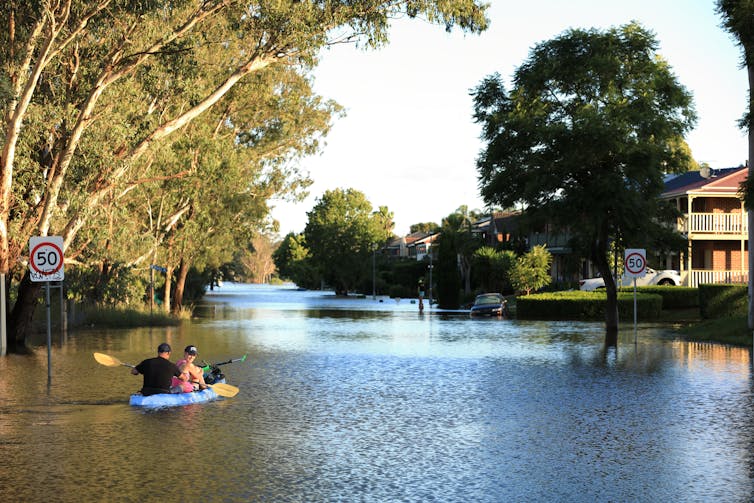
Our recent research found that in March 17-24 last year, NSW experienced an almost constant stream of high water vapour in the atmosphere above from both an atmospheric river that originated in the Indian Ocean and a high pressure system in the Tasman Sea.
On March 23, over 800kg of water vapour passed over Sydney every second - that’s 9.6 Sydney Harbours of water in one day.
Likewise, soil moisture in south-east Queensland has been above average since October last year. Last November was Australia’s wettest November on record with south-east Queensland receiving very-much-above average rainfall.
This meant the ground was already sodden. So when the heavy rain fell this week, Queensland flooded.
What’s The Role Of Climate Change?
We also calculated the likelihood of future atmospheric rivers as big as the one in March 2021 flowing over Sydney using the latest generation of climate models.
Earth is currently on track for 2.7℃ warming by the end of the century. Under this scenario, we found the chance of a similar weather event to the March floods will become 80% more likely. This means we are on track for more extreme rainfall and flooding in Sydney.
We also know climate change will increase the occurrence of atmospheric rivers over the planet, but more research is needed to determine just how often we can expect these damaging events to happen, including in southeast Queensland.
However, this path is not final. There is still time to change the outcome if we urgently reduce emissions to stop global warming beyond 1.5℃ this century. Every little bit we do to limit carbon emissions might mean one less flood and one less person who has to rebuild.![]()
Kimberley Reid, PhD Researcher in Atmospheric Science, The University of Melbourne and Andrew King, Senior Lecturer in Climate Science, The University of Melbourne
This article is republished from The Conversation under a Creative Commons license. Read the original article.
Australia could get to net zero emissions much quicker than 2050 – if our politics was a force for change. Here’s how
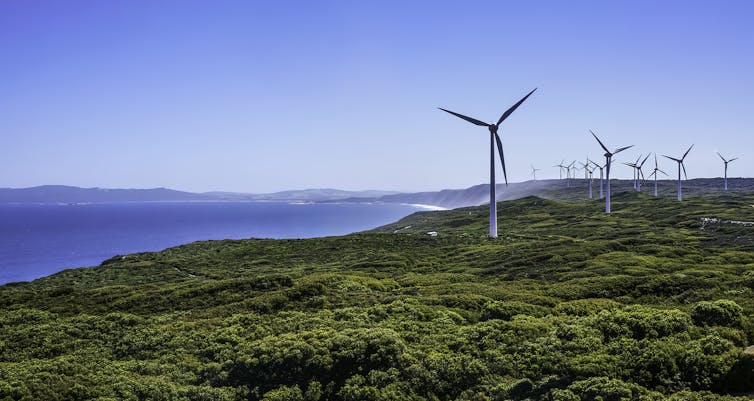
Let’s imagine Australia was able to use politics to work on the single largest threat facing us: climate change.
Our current goal is net zero by 2050. But we could do it much faster. Our modelling shows we could get there by 2035. That’s just 13 years away.
Just think of last week’s audacious bid by tech billionaire Mike Cannon-Brookes to take over our largest emitting company, AGL, and rapidly retire its fossil fuel assets.
You might look at the latest climate news and think it’s too late. This is simply not true. There’s a better future just ahead, if we can seize it.
Getting On With The Job Of Decarbonising
Within 13 years (2035), we could have a near zero emission power grid of firmed renewables powering our society. That same year, houses and apartments could hit near zero emissions, courtesy of new all-electric buildings and retrofits. And agriculture, too, could see significant emissions reductions.
Real progress could come even earlier. Within eight years, electric vehicles could make up 75% of new car sales, with public transport electrified too. Industry – often seen as hard to decarbonise – could halve its emissions by 2030. And Australia could be on the way to becoming a green superpower, courtesy of our wealth of minerals needed for the transition and ability to make green hydrogen.

Electricity: Near Zero Within 13 Years
The way we generate electricity is changing the fastest. Over the last decade, we have tripled the share of renewables in Australia’s generation mix to over 20%.
We have more than enough sun and wind to make the renewable share as high as 80% by 2030, and almost 100% by 2035. We can manage that even though electricity demand is expected to double by 2050.
We even have the renewable resources to produce more electricity than we use, and export the surplus. Tasmania, for example, has legislated a 200% renewable energy target by 2040 – meaning they can export the excess power.
We have the technologies we need for this kind of scale. All we have to do is plan the transition properly, so the wave of cheap renewable power arrives as coal and gas exit. Done right, we’ll all benefit from cheaper power. State governments and operators of the energy market have shown how this can be done.
There will still be mining jobs, as the world demands our green tech minerals such as lithium, cobalt and copper. And we have huge opportunities to benefit from our ever-cheaper renewables through nation-building megaprojects where Australian renewables are sent under the sea to Asia, or converted to green hydrogen and shipped in place of fossil gas exports.
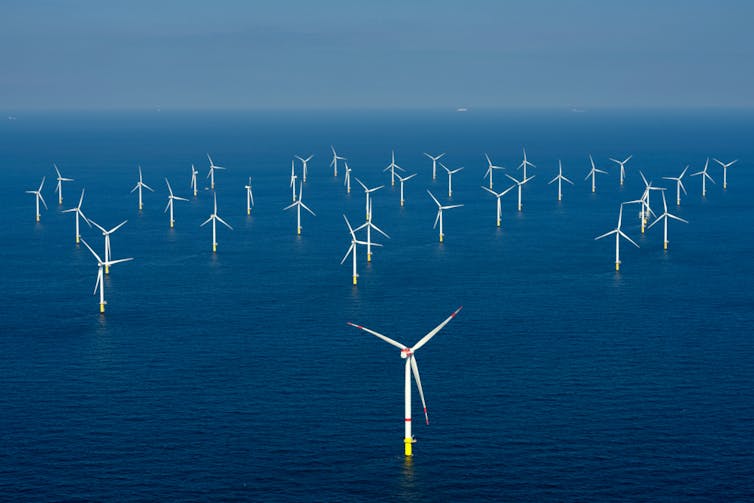
Buildings: Near Zero Within 13 Years, With A Boost To Comfortable Living
As we shift to clean electricity, we unlock emissions reductions across the economy. We’ll see this most clearly in our homes and commercial buildings.
How? Look at the all-electric, 7-star new buildings under construction by some of Australia’s largest property developers. For those of us in older houses, large-scale retrofitting would enable us to reach near zero emissions by 2035 at lowest cost.
The benefit? Lower energy bills and more comfortable living, as we fix the well-known issues with insulation and air leakage. The energy use per Australian household could be halved by 2030 if available technologies are rolled out in Australian markets.
Transport: 75% Of New Cars Electric Within Eight Years
Most technology needed to electrify Australia’s cars, utes and vans is ready to hit the road. If more electric vehicle models became available and we get on a similar timeline to the EU and US, price parity could be reached within four years.
When electric vehicles are price competitive with internal combustion engine models, people will switch. With the right policy and market settings, three in four new cars could be electric by the end of the decade.
In public transport, we could see rapid change. Sydney’s bus fleet will be electrified and the metro rail system powered by renewables this decade. Melbourne’s trams are renewably powered, with electric buses coming too. If taken up across the country, Australia’s public transport network could be transformed by 2030.
Decarbonising the way we transport freight and move long distances will take more work. But zero emissions container ships and battery-powered trains are in the works.
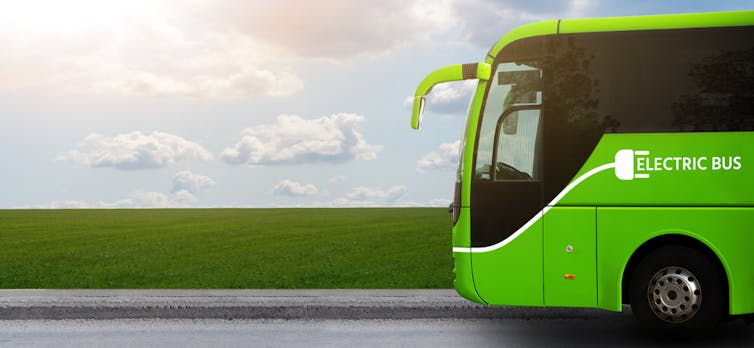
Industry: Emissions Halved Within Eight Years
While industry is often seen as a hard nut to crack, it’s possible to achieve major emissions reductions using known technologies. Our modelling shows industry emissions could be halved by 2030.
How? By rapidly switching to existing technologies to improve material and energy efficiency, while solutions are developed for more difficult emission sources.
A vital first step is to create industrial precincts powered by renewables. It’s already happening in Western Australia and New South Wales.
Australia’s significant competitive advantages in mineral resources and renewable energy mean we could lead the world in establishing green industries.
Green hydrogen prices could drop to A$2/kg by the early 2030s, allowing Australia to become a significant exporter while using hydrogen domestically to power other low emissions export industries like green steel.
Agriculture: Net Zero Is Possible By 2035
Livestock accounts for around 70% of all agricultural emissions. Deployment of solutions like anti-methane technologies and plant-based proteins will create meaningful emissions reductions by 2030.
Research breakthroughs are occurring all the time in this area, and there is a real desire for progress in the industry.
Meat and Livestock Australia is aiming for carbon neutrality by 2030 for Australia’s beef, lamb and goat production. With the right policy signals, this transformation would be within reach.
Natural Resources: Carbon Sinks Will Get Us To Net Zero
Even with these actions, most sectors of the Australian economy will still have residual emissions in 2035. That’s where our vast land area and enviable natural resources can help get us to net zero.
Even now, Australia’s land use, land use change and forestry (LULUCF) sector stores more carbon than it produces.
We can use this sector to “soak up” any residual emissions, through forestry plantations, growing more trees on farms (which also improves productivity) and other carbon farming techniques.
Restoring and preserving wilderness in national parks, mangroves, wetlands, and other landscapes offer further opportunity for carbon sequestration.
Importantly, land isn’t an “easy fix” replacing the need to slash emissions and quickly. We can’t store endless carbon in these natural sinks.

More Ready Than You Think
It is entirely possible for Australia to hit net zero emissions within 13 short years.
It’s a big job. But we can get there, and we’ll reap huge benefits from the switch.
But we need a united front – with businesses, organisations, individuals – and, yes, governments – agreeing to get on with it. Let’s get cracking.![]()
Anna Malos, Australia - Country Lead, ClimateWorks Australia and Simon Graham, Senior Analyst, ClimateWorks Australia
This article is republished from The Conversation under a Creative Commons license. Read the original article.
Avalon Golf Course Bushcare Needs You


Pittwater Reserves: Histories + Notes + Others
A History Of The Campaign For Preservation Of The Warriewood Escarpment by David Palmer OAM and Angus Gordon OAM
Angophora Reserve - Angophora Reserve Flowers
Annie Wyatt Reserve - A Pictorial
Avalon's Village Green: Avalon Park Becomes Dunbar Park - Some History + Toongari Reserve and Catalpa Reserve
Bairne Walking Track Ku-Ring-Gai Chase NP by Kevin Murray
Bangalley Headland Bangalley Mid Winter
Banksias of Pittwater
Barrenjoey Boathouse In Governor Phillip Park Part Of Our Community For 75 Years: Photos From The Collection Of Russell Walton, Son Of Victor Walton
Barrenjoey Headland: Spring flowers
Barrenjoey Headland after fire
Bayview Baths
Bayview Wetlands
Beeby Park
Bilgola Beach
Botham's Beach
Bungan Beach Bush Care
Careel Bay Saltmarsh plants
Careel Bay Birds
Careel Bay Clean Up day
Careel Bay Playing Fields History and Current
Careel Creek
Careel Creek - If you rebuild it they will come
Centre trail in Ku-ring-gai Chase National Park
Chiltern Track- Ingleside by Marita Macrae
Clareville Beach
Clareville/Long Beach Reserve + some History
Coastal Stability Series: Cabbage Tree Bay To Barrenjoey To Observation Point by John Illingsworth, Pittwater Pathways, and Dr. Peter Mitchell OAM
Cowan Track by Kevin Murray
Curl Curl To Freshwater Walk: October 2021 by Kevin Murray and Joe Mills
Currawong and Palm Beach Views - Winter 2018
Currawong-Mackerel-The Basin A Stroll In Early November 2021 - photos by Selena Griffith
Currawong State Park Currawong Beach + Currawong Creek
Deep Creek To Warriewood Walk photos by Joe Mills
Drone Gives A New View On Coastal Stability; Bungan: Bungan Headland To Newport Beach + Bilgola: North Newport Beach To Avalon + Bangalley: Avalon Headland To Palm Beach
Dunbar Park - Some History + Toongari Reserve and Catalpa Reserve
Dundundra Falls Reserve: August 2020 photos by Selena Griffith - Listed in 1935
Elsie Track, Scotland Island
Elvina Track in Late Winter 2019 by Penny Gleen
Elvina Bay Walking Track: Spring 2020 photos by Joe Mills
Elvina Bay-Lovett Bay Loop Spring 2020 by Kevin Murray and Joe Mills
Fern Creek - Ingleside Escarpment To Warriewood Walk + Some History photos by Joe Mills
Ingleside
Ingleside Wildflowers August 2013
Irrawong - Ingleside Escarpment Trail Walk Spring 2020 photos by Joe Mills
Irrawong - Mullet Creek Restoration
Katandra Bushland Sanctuary - Ingleside
Lucinda Park, Palm Beach: Some History + 2022 Pictures
McCarrs Creek
McCarr's Creek to Church Point to Bayview Waterfront Path
McKay Reserve
Mona Vale Beach - A Stroll Along, Spring 2021 by Kevin Murray
Mona Vale Headland, Basin and Beach Restoration
Mount Murray Anderson Walking Track by Kevin Murray and Joe Mills
Mullet Creek
Narrabeen Creek
Narrabeen Lagoon Catchment: Past Notes Present Photos by Margaret Woods
Narrabeen Lagoon State Park
Narrabeen Lagoon State Park Expansion
Narrabeen Rockshelf Aquatic Reserve
Nerang Track, Terrey Hills by Bea Pierce
Newport Bushlink - the Crown of the Hill Linked Reserves
Newport Community Garden - Woolcott Reserve
Newport to Bilgola Bushlink 'From The Crown To The Sea' Paths: Founded In 1956 - A Tip and Quarry Becomes Green Space For People and Wildlife
Pittwater spring: waterbirds return to Wetlands
Pittwater's Lone Rangers - 120 Years of Ku-Ring-Gai Chase and the Men of Flowers Inspired by Eccleston Du Faur
Pittwater's Parallel Estuary - The Cowan 'Creek
Riddle Reserve, Bayview
Salvation Loop Trail, Ku-Ring-Gai Chase National Park- Spring 2020 - by Selena Griffith
Stapleton Reserve
Stapleton Park Reserve In Spring 2020: An Urban Ark Of Plants Found Nowhere Else
The Chiltern Track
The Resolute Beach Loop Track At West Head In Ku-Ring-Gai Chase National Park by Kevin Murray
Towlers Bay Walking Track by Joe Mills
Trafalgar Square, Newport: A 'Commons' Park Dedicated By Private Landholders - The Green Heart Of This Community
Turimetta Beach Reserve by Joe Mills, Bea Pierce and Lesley
Turimetta Beach Reserve: Old & New Images (by Kevin Murray) + Some History
Turimetta Headland
Warriewood Wetlands and Irrawong Reserve
Whale Beach Ocean Reserve: 'The Strand' - Some History On Another Great Protected Pittwater Reserve
Winji Jimmi - Water Maze

New Shorebirds WingThing For Youngsters Available To Download
A Shorebirds WingThing educational brochure for kids (A5) helps children learn about shorebirds, their life and journey. The 2021 revised brochure version was published in February 2021 and is available now. You can download a file copy here.
If you would like a free print copy of this brochure, please send a self-addressed envelope with A$1.10 postage (or larger if you would like it unfolded) affixed to: BirdLife Australia, Shorebird WingThing Request, 2-05Shorebird WingThing/60 Leicester St, Carlton VIC 3053.

 Shorebird Identification Booklet
Shorebird Identification Booklet
The Migratory Shorebird Program has just released the third edition of its hugely popular Shorebird Identification Booklet. The team has thoroughly revised and updated this pocket-sized companion for all shorebird counters and interested birders, with lots of useful information on our most common shorebirds, key identification features, sighting distribution maps and short articles on some of BirdLife’s shorebird activities.
The booklet can be downloaded here in PDF file format: http://www.birdlife.org.au/documents/Shorebird_ID_Booklet_V3.pdf
Paper copies can be ordered as well, see http://www.birdlife.org.au/projects/shorebirds-2020/counter-resources for details.
Download BirdLife Australia's children’s education kit to help them learn more about our wading birdlife
Shorebirds are a group of wading birds that can be found feeding on swamps, tidal mudflats, estuaries, beaches and open country. For many people, shorebirds are just those brown birds feeding a long way out on the mud but they are actually a remarkably diverse collection of birds including stilts, sandpipers, snipe, curlews, godwits, plovers and oystercatchers. Each species is superbly adapted to suit its preferred habitat. The Red-necked Stint is as small as a sparrow, with relatively short legs and bill that it pecks food from the surface of the mud with, whereas the Eastern Curlew is over two feet long with a exceptionally long legs and a massively curved beak that it thrusts deep down into the mud to pull out crabs, worms and other creatures hidden below the surface.
Some shorebirds are fairly drab in plumage, especially when they are visiting Australia in their non-breeding season, but when they migrate to their Arctic nesting grounds, they develop a vibrant flush of bright colours to attract a mate. We have 37 types of shorebirds that annually migrate to Australia on some of the most lengthy and arduous journeys in the animal kingdom, but there are also 18 shorebirds that call Australia home all year round.
What all our shorebirds have in common—be they large or small, seasoned traveller or homebody, brightly coloured or in muted tones—is that each species needs adequate safe areas where they can successfully feed and breed.
The National Shorebird Monitoring Program is managed and supported by BirdLife Australia.
This project is supported by Glenelg Hopkins Catchment Management Authority and Hunter Local Land Services through funding from the Australian Government’s National Landcare Program. Funding from Helen Macpherson Smith Trust and Port Phillip Bay Fund is acknowledged.
The National Shorebird Monitoring Program is made possible with the help of over 1,600 volunteers working in coastal and inland habitats all over Australia.
The National Shorebird Monitoring program (started as the Shorebirds 2020 project initiated to re-invigorate monitoring around Australia) is raising awareness of how incredible shorebirds are, and actively engaging the community to participate in gathering information needed to conserve shorebirds.
In the short term, the destruction of tidal ecosystems will need to be stopped, and our program is designed to strengthen the case for protecting these important habitats.
In the long term, there will be a need to mitigate against the likely effects of climate change on a species that travels across the entire range of latitudes where impacts are likely.
The identification and protection of critical areas for shorebirds will need to continue in order to guard against the potential threats associated with habitats in close proximity to nearly half the human population.
Here in Australia, the place where these birds grow up and spend most of their lives, continued monitoring is necessary to inform the best management practice to maintain shorebird populations.
BirdLife Australia believe that we can help secure a brighter future for these remarkable birds by educating stakeholders, gathering information on how and why shorebird populations are changing, and working to grow the community of people who care about shorebirds.
To find out more visit: http://www.birdlife.org.au/projects/shorebirds-2020/shorebirds-2020-program
Aussie Bread Tags Collection Points

Aged Care Reform
- The introduction of the funding model for aged care, the Australian National Aged Care Classification (AN-ACC) will be introduced from October 1, 2022 and will deliver a funding boost to increase the amount of front line care to residents. The AN ACC will deliver more than $3.9 billion in increased funding to rural and remote residential aged care services, as well as specialised homeless and remote Indigenous services, to reflect the increased costs of delivering care in these services;
- A registration scheme which will provide a nationally consistent pre-employment screening for aged care workers of approved providers to replace existing police checking obligations; and
- An expansion of the Serious Incident Response Scheme to home and flexible care from July 1, 2022.
New Frankston Home For Healthy Ageing Research
Meta-Analysis Of 15 Studies Reports New Findings On How Many Daily Walking Steps Needed For Longevity Benefit
Course Set For Tomorrow
COVID mask mandates might be largely gone but here are 5 reasons to keep wearing yours
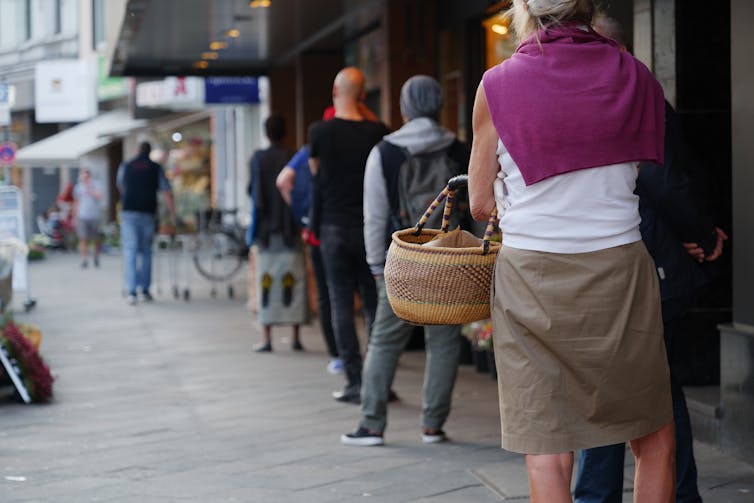
Mask mandates in most indoor settings have been dropped in New South Wales, Victoria and the ACT, with Queensland to follow later this week.
Without a mandate, mask use tends to drop, so we can expect only a minority of people to be masked in public indoor spaces.
With thousands of cases a day and just over half (57%) of Australians having received a third COVID vaccine dose and children still under-vaccinated, we may see a surge in infections.
While masks are a small inconvenience, they remain vital in preventing SARS-CoV-2, because the virus spreads through the air we breathe.
Some people will continue to wear masks to stay safe and achieve a more normal life through the pandemic. Here are five reasons to keep wearing yours.
1. Masks Reduce Your Chance Of Getting COVID
Many studies have shown masks protect against COVID. While N95 respirators offer the greatest protection, even cloth masks are beneficial. N95s respirators lower the odds of testing positive to COVID by 83%, compared with 66% for surgical masks and 56% for cloth masks.
The protection when everyone wears a mask is much greater, because it reduces the likelihood of well people inhaling the virus and prevents infected people from exhaling the virus into the air. If everyone wears a mask, the viral load in the air is much lower.
When we lose the protection of universal masking, it’s a good idea to wear a high protection N95 or P2 respirator.
2. You Might Not Know You Have COVID
Transmission of the virus without symptoms is a major driver of spread, and we cannot know who around us is infected.
Infected people may be asymptomatic or may not know they’re infected. This is especially so for Omicron.
Overall, about one in four infections are asymptomatic. But even people with symptomatic infection are contagious before the symptoms start.

3. Wearing A Mask Protects Others, Including Those At Risk Of Severe COVID
Wearing a mask protects others, including those at greatest risk of severe COVID: people with disability, chronic illnesses and suppressed immune systems.
COVID disproportionately affects migrants and people from lower socioeconomic groups who are more likely to work in customer-service roles. If you wear a mask, you’re protecting workers, commuters and others you interact with.
Rates of vaccination also lag among Aboriginal and Torres Strait Islander people, leaving them more vulnerable to COVID in the absence of masks.
Masks also protect children who are vulnerable to COVID, with only half of five to 11 year olds partially vaccinated and under-fives not yet eligible for vaccination.
Children who wear masks can also protect their peers. In the United States, the risk of outbreaks was nearly four times higher in schools without mask mandates compared to those with mandates.
Omicron is not the flu or a cold, and has accounted for 17% more deaths than Delta in the United States. While Omicron generally causes less severe disease than Delta, it has claimed more lives because of vastly higher case numbers.
There is also growing evidence SARS-COV-2 persists in the body after infection, which may result in long-term heart, lung and brain damage.
4. Masks Protect Your Colleagues
Many workplaces are insisting on people returning to face-to-face work, some without providing safe indoor air – and now without mask mandates.
The risk of COVID transmission is greatest when indoors for prolonged periods without adequate airflow. So sitting in an office for eight hours without a mask is a risk, especially if safe indoor air has not been addressed.

At the same time as dropping many workplace mask mandates, NSW has moved to remove automatic workers’ compensation for people who catch COVID at work.
This is a double disadvantage for workers returning to workplaces with fewer protections and facing greater obstacles to workers’ compensation should they get infected.
5. Others Might Follow Your Lead
Being one of the few people wearing a mask when others aren’t, such as in a supermarket, is a daunting prospect for those of us who wish to continue masking. There are reports of masked people being abused and bullied.
However a NSW survey showed the majority of people in that state wanted mask mandates to remain. The more we normalise masks and the more we see them, the better protected the community will be.
As much as we wish it so, the pandemic is not over and new variants will likely emerge.
A layered, multi-pronged strategy which includes vaccines, masks, ventilation, testing and tracing is the best way to protect health, the economy and a resumption of normal activities. ![]()
C Raina MacIntyre, Professor of Global Biosecurity, NHMRC Principal Research Fellow, Head, Biosecurity Program, Kirby Institute, UNSW Sydney
This article is republished from The Conversation under a Creative Commons license. Read the original article.
The Royal Commission One Year On
New Programs To Keep Seniors Connected
- Aboriginal and Torres Strait Islander people aged 50 years and over
- Seniors from culturally and linguistically diverse (CaLD) backgrounds
- Seniors who are carers
- Seniors from culturally and linguistically diverse (CaLD) backgrounds
- Seniors living with disability, dementia, chronic disease or mental illness
Just 30-90 minutes of resistance training weekly decreases risk of premature death – new research
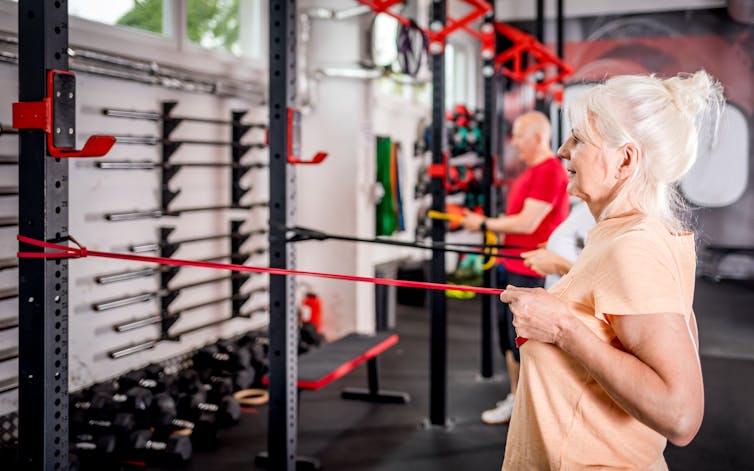
There’s long been evidence that moderate aerobic exercise (think walking, running, or cycling) are good for your lifelong health and well-being. Research even shows us more active people also tend to live longer, healthier lives with lower rates of disease – including cancers, diabetes and cardiovascular disease.
But what about resistance exercise – like lifting weights? While it’s thought these kinds of exercises are probably also good for health and longevity, less evidence has existed showing the benefits. But a recent study now shows that 30-90 minutes of resistance training a week is enough to potentially decrease risk of premature death from all causes by 10%-20%.
The team of researchers from three universities in Japan conducted a meta-analysis – meaning they pooled data from 16 separate studies looking at longevity, disease risk and resistance exercise. This allowed them to look at tens of thousands of participants altogether.
They found that 30-90 minutes of resistance exercise per week was optimal for lowering overall risk of dying from all causes. More strikingly, they also found regularly performing more than three hours of strength training per week could actually increase risk of premature death by about 10%.
They also found that the optimal amount of time spent resistance training varied when it came to preventing different diseases. For example, while 40-60 minutes of strength training per week is optimal for reducing risk of cardiovascular disease, the risk of diabetes continues to drop the more time a person spent resistance training each week. However, resistance training was shown to have no effect on the risk of some specific types of cancer, such as bowel, kidney or pancreatic.
The findings of this study are largely in line with what the NHS already recommends. According to them, adults aged 19 to 64 should aim to do two strength training sessions per week in order to benefit their overall health. But given public health guidelines are often a compromise between what’s optimal to perform and what people won’t be put off by, it’s promising to see that the optimal amount of strength training per week to benefit health so closely mirrors current guidelines.

There are a couple of limitations with this study. While the number of people pooled across the studies is large, the number of studies actually included in the analysis is still quite small. The participants of the study were also primarily North American or western European – so the findings may not be as relevant for people of many different ethnic backgrounds. Another limitation is that most of the studies included in the analysis relied on questionnaires of large groups of people asking about their exercise habits. The problem with this is that people may overestimate or lie about the amount of exercise they actually do.
Optimal Exercise
Strength training is good for your overall health in many more ways than you might expect.
Besides the obvious – that it makes you stronger, for example – researchers are beginning to learn more about the role certain hormones and cells that are released during resistance exercise play in our body.
For example, myokines are hormones that our muscles release in response to all sorts of stimuli – including exercise. Circulating around the body, myokines are able to regulate metabolism, as well as liver, brain and kidney function. One specific myokine I’ve spent a career studying is myostatin. While we know that it regulates muscle size, there’s all sorts of new evidence that it also influences metabolism and fat cell growth – which all play a role in helping us keep healthy and live longer.
Research also shows us that resistance exercise releases tiny cell fragments from our muscle cells called “extracellular vesicles”. These allow our muscle tissues to better communicate with each other. While we don’t entirely know what they’re doing, we do know that they’re carrying RNA (a molecule similar to DNA), proteins and even mitochondria (which help convert food into energy our cells can use) from cell to cell. So although we aren’t entirely clear of their function yet, this is just another reminder of the influence our muscles have on many aspects of our health and body function.
However, the authors of this recent study only looked at the relationship between strength training and longevity. This means they didn’t look at why it has a protective effect – and why more than three hours of strength training per week was also linked to slightly greater risk of premature death. While we may be able to speculate on why strength training has this protective effect based on what other research has shown, more follow-up studies will be needed that really seek to explore these questions.
But while this study has shown strength training to be beneficial for preventing premature death from many harmful diseases, that doesn’t mean you should only strength train. It’s important to also do moderate intensity aerobic exercise (such as walking, jogging or cycling) most days of the week to optimise your chances of living a longer, healthier life.![]()
Bradley Elliott, Senior Lecturer in Physiology, University of Westminster
This article is republished from The Conversation under a Creative Commons license. Read the original article.
Word Of The Week: Meglomania
1. an unnaturally strong wish for power and control, or the belief that you are very much more important and powerful than you really are. 2. a delusional mental illness that is marked by feelings of personal omnipotence and grandeur. 3. an obsession with power and wealth, and a passion for grand schemes.
megalo-; a combining form with the meanings “large, great, grand,” “abnormally large,” used in the formation of compound words: megalopolis; megalocardia. From Greek, combining form of megal- (stem of mégas) great, large
Premier’s Reading Challenge Now Open
Stronger Career Pathways For Students
- Fee-free apprenticeships and pre-traineeships, allowing students to ‘test-drive’ different vocational education and training courses;
- Specialist head teachers and teams to work with careers advisers to create more engaging opportunities and pathways for students; and
- Dedicated staff to promote awareness and engagement in school-based apprenticeships and traineeships, and offer tailored support and mentoring for students exploring these pathways.
Young And Emerging Artists Showcase Talents At MAG&M
Ocean Film Festival World Tour 2022
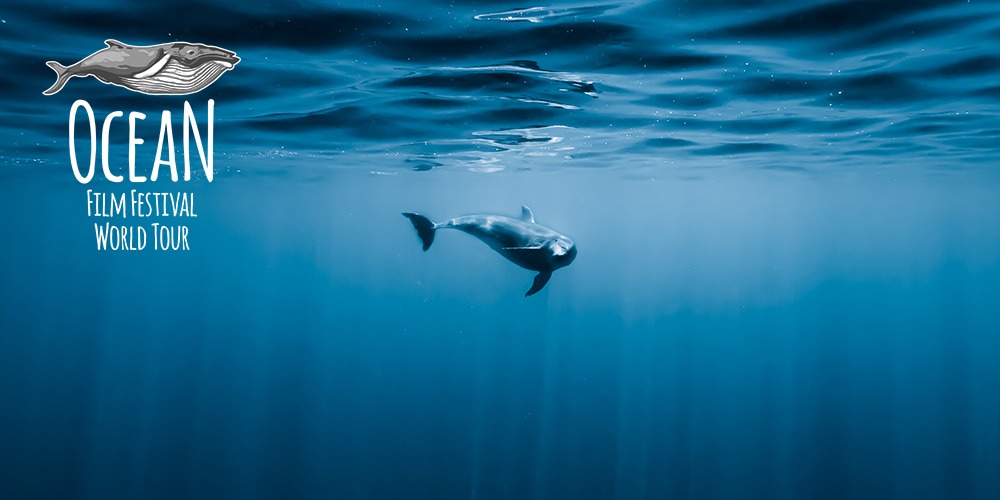
Military History Lesson On Offer For Students
Applications Now Open For NSW Youth Advisory Council 2022
Bee Gees - Jive Talkin'
Morning Of The Earth: 50th Anniversary Screening At Cremorne
Morning of the Earth 50th Anniversary screening with director Q&A Wed March 9 at the Hayden Orpheum Picture Palace, Cremorne. Beautifully remastered in 4K. One show only! Tickets: http://ow.ly/Rkhc30s774W
A tale of subterfuge, rivalry, Napoleon and snakes: how the NSW State Library came to own the map of Abel Tasman’s voyages

Every year, tens of thousands of New South Wales State Library patrons walk past a stunning mosaic replica of the Tasman Map on the floor of the Mitchell library vestibule. The original Tasman map, recently restored, charts the two voyages of the Dutch explorer Abel Tasman in 1642 and 1644.
The map is perhaps the Mitchell Library’s greatest treasure, though we know little about the time, place, or artist responsible for it.
Yet as we discuss in a new paper, its acquisition by the Mitchell library is a story of subterfuge, intrigue, personal animosities and state-versus-commonwealth rivalries.
The Tasman Map was probably made in the mid- to late-1600s in Batavia (now known as Jakarta), home of the Dutch East India Company, on Japanese paper.
It was most likely compiled by a team of draftsmen from a range of charts from Tasman’s two voyages. One of the artists was almost certainly Isaack Gilsemans, draftsman on the voyage.
Mystery shrouds the map’s whereabouts from the 17th century until 1843, when Amsterdam mapmaker Jacob Swart described and reproduced it.
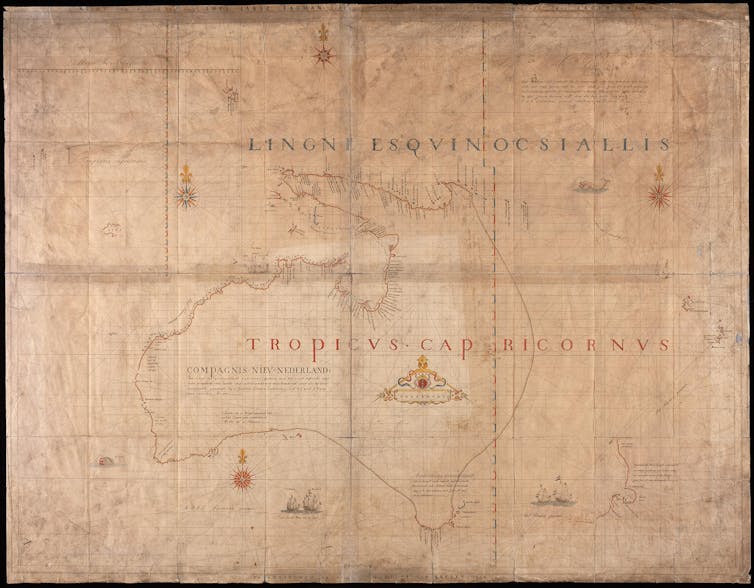
In 1891 the original 17th century map was listed for sale by Frederick Muller & Co. An interested group headed by historian George Collingridge tried unsuccessfully to persuade the NSW government to purchase it.
Instead, the map was purchased by Prince Roland Bonaparte, great-nephew of Napoleon, and an anthropologist with a great interest in Australia.
The Princely Promise
In March 1899, Henry Vere Barclay – a failed pastoralist, explorer and raconteur – gave a talk at the Imperial Institute in London where he announced Prince Roland had promised the Tasman map would be bequeathed to the Australian Commonwealth Government.
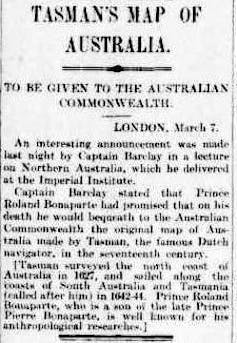
Within days, headlines declaring Prince Roland’s intended gift of the map to the Commonwealth of Australia had appeared in at least 44 Australian and New Zealand newspapers.
The prince’s intention to bequeath the map was confirmed in 1904 by James Park Thomson, president of the Royal Geographical Society of Queensland.
After viewing the map in Paris, Thomson wrote in his memoir, Round the World, of how the prince believed the map would be “of the greatest interest and use to the Commonwealth.”
Also reported by Thomson was how the prince wanted to hand the map to the Commonwealth government in person – but he was terrified of snakes and disliked rabbits which “seemed to overrun the place”.
Murmurings about the Tasman map fell silent for two decades and only emerged again after the prince’s death in 1924.
A Clandestine Operation
In 1926, anthropologist Daisy Bates read Thomson’s book, noting the reference to Prince Roland’s intended bequest.
Knowing the prince had recently died, she wrote to an acquaintance, William Ifould, asking him to enquire of the prince’s estate and the status of the map.
As chief librarian of the NSW Public Library, Ifould immediately began a clandestine operation to bring the Tasman Map to Australia.

It is clear from his earliest communications, when he warned his agent not to let the map come to the attention of Prime Minister Stanley Bruce, that Ifould was consumed by a singular goal: to acquire the map for NSW before anyone from the Commonwealth government remembered the prince’s promise.
Ifould’s chief personal nemesis was Kenneth Binns, librarian of the Commonwealth National Library, but Ifould also held an abiding antipathy for the Commonwealth itself.
In the earliest days of the scramble for the map, the Commonwealth Library’s collection was yet to have a permanent home, with the national capital of Canberra still in the early planning stages. Binns was based in Melbourne, then the seat of the national parliament, and this played into a rivalry between Sydney and Melbourne.
The Tasman Map was in the possession of Princess Marie Bonaparte, who was aware of her father’s desire to bestow it upon the Australian nation. Her husband Prince George wanted to travel to Australia and present the map himself.
This created concern for Ifould and the Mitchell Library, who were worried they might accidentally present it to the prime minister instead of the Mitchell Library.
Princess Marie clearly considered the map belonged to the Australian Commonwealth.
Ifould and his conspirators – including a succession of British ambassadors and NSW agents-general – ignored this. As one agent-general advised the NSW premier:
it is probable that she does not mean to say the Map will go to the Commonwealth Government, and that the use of the words ‘Government of Australia’ has no particular significance.
In May 1932 came the breakthrough Ifould had been waiting for: Prince George postponed his trip again, and Princess Marie agreed to hand the map to the Paris-based Australian Trade Commissioner.
Ifould’s seven-year clandestine operation, came to fruition when the map, now known as the Bonaparte-Tasman Map, arrived in Australia to great fanfare in September 1933.
A Global Map; A Local Rivalry
Absent from any version of the story over the past 90 years is admission of knowledge of Prince Roland’s wish, expressed multiple times, for the map to go to the Commonwealth.

The role of Barclay’s 1899 anecdote, and its publication around the country, was eradicated. This allowed the map falling into the Mitchell’s hands to be characterised as a happy coincidence, and not the result of scheming and subterfuge.
The Tasman Map, as it is commonly viewed today, is a mosaic reproduction by Italian artisans, of a Dutch map, on Japanese paper, depicting Antipodean coastlines, representing east Asian dominance, donated by a French aristocrat, intended for the Australian Commonwealth, but wrested by a state institution obsessed with inter-library rivalry.
This research will be discussed at the NSW State Library’s Mapping the Pacific conference on March 3 2022.![]()
Lynette Russell, ARC Laureate Fellow, Monash University, and Deputy Director of the ARC Centre of Excellence for Australian Biodiversity and Heritage, Monash University and Leonie Stevens, Research Fellow, Monash University
This article is republished from The Conversation under a Creative Commons license. Read the original article.
How Tasmania’s major digital blackout was fixed, and how another could be avoided – an electrical engineer explains

Tasmanians yesterday suffered a six-hour digital blackout, with phone and internet services down across the state. Some radio and television broadcasts were also affected, as well as banking and electronic payment services.
The impact was so severe that Tasmania’s connectivity to the rest of the world was reportedly reduced by 70%, before services slowly began being restored around 6pm.
The state is connected to the Australian mainland (and the rest of the world) by three fibre-optic cables. Two are deployed by Telstra, and the third is owned by the Tasmanian government and laid along the BassLink electricity cable into Victoria.
By an astounding coincidence, different construction crews cut the two Telstra cables in two separate incidents: one was cut at around 11am in Victoria, near Frankston, and the other was cut at a remote location in Tasmania at around 1pm.
It’s not clear how this happened, given the perennial advice for construction crews to “dial before your dig”. It could be the crews were working with inaccurate information, and didn’t realise they were digging on the cables’ routes.
The breaks in the two cables led to a major disruption to all internet and telecommunication services in Tasmania. Priority services, such as triple zero calls, were kept alive using the third cable.
A Complicated Setup
Undersea fibre-optic cables are made of bundles of glass fibres, each one about as thick as a strand of human hair. Information is carried along these fibre strands at high speeds in the form of light pulses.
The fibres are carefully arranged inside the cable, with each strand supported by a strengthening sheath. The entire cable is also protected by an outer waterproof sheath, making it suitable for undersea deployment.
Undersea cables leave the shore via special landing sites and loosely sit on the ocean floor. They can suffer damage from anchors of passing ships, or natural disasters – which happened during the recent volcanic eruption in Tonga. But these incidents are very rare.
On the shore, the cables are laid underground and only accessible at key network exchange locations.
Repair Logistics
Repairing damage to undersea cables requires specialist ships that draw the cable to the ocean’s surface. One by one, the individual glass fibre strands are separated, cleaved with a diamond blade (to achieve clean polished ends on the strands), and then fused or welded back together to complete the repair.
The repaired link is mechanically strengthened with a protective covering, after which the network engineers run a range of tests before the link can carry network traffic again.
In yesterday’s events, however, the damage to the two fibre-optic cables happened along their land routes, so repair crews could fix them relatively quickly. Had the cables been damaged at undersea locations, repairs could have taken days.
Any delays yesterday would have mainly been a result of getting the right equipment and technical crews to the locations – especially the more remote one on the Tasmanian side.
What’s The Fix?
The digital blackout highlighted Tasmania’s over-reliance on the current fibre links. The Tasmanian government has in the past failed to be part of other undersea cable projects that could have provided a more diverse connection between Tasmania and the mainland.
The state could run into more trouble in the future, should it fail to bolster its connective capabilities.
As the distance between Tasmania and the mainland is about 200km, deploying wireless links (such as those used by radio towers) wouldn’t be realistic. This would require very high antenna towers and multiple repeaters in the sea.
And while NBN satellites could be used to provide some connectivity, undersea cables remain the best option.
Ideally, there should be investment not only in establishing a potential fourth cable link, but also in upgrading the existing infrastructure to broaden its capacity. Cables would still be impacted during adverse events, but the entire system would become much more resilient overall.
Diversity in the cable network is also critical, especially in terms of the physical cable routes. In situations where links are damaged, we need to be able to reconfigure the network quickly (and without human intervention). So even if a fault happens, signals can be automatically rerouted to bypass faulty links.
With the world’s increasing dependence on digital connectivity, and the emergence of 5G, operators like Telstra and newcomer HyperOne are planning to build new national fibre networks.
In February Telstra announced plans to expand its current network in Australia, with roughly A$1.6 billion worth of upgrades expected – but specifics about where and how the money will be spent aren’t known.
HyperOne also has plans to build additional undersea cables linking Perth, Adelaide, Melbourne, Launceston, Hobart and Sydney. This could provide more diversified connectivity to Tasmania.![]()
Thas Ampalavanapillai Nirmalathas, Professor of Electrical and Electronic Engineering and Deputy Dean Research at Faculty of Engineering and Information Technology, The University of Melbourne
This article is republished from The Conversation under a Creative Commons license. Read the original article.
We’re recycling potato skins to make prebiotics: here’s why that’s good for your gut – and the planet
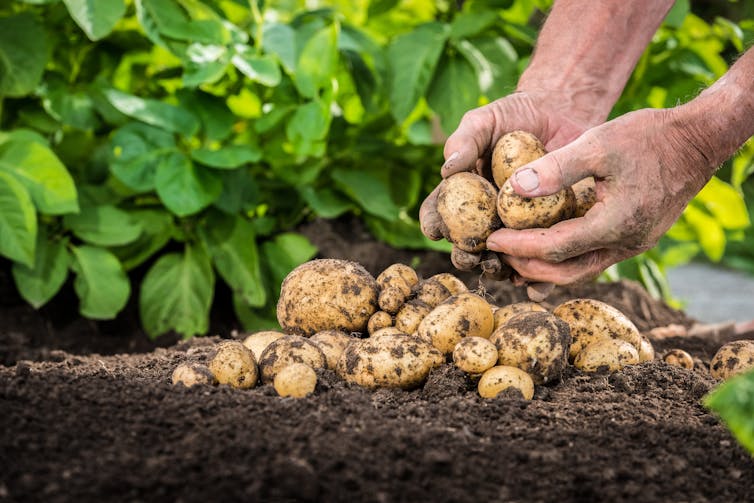
It’s an unbelievable tragedy that a third of the world’s food is wasted. To put that in perspective, it would take an area the size of China to grow that much food – and if food waste were a country it would be the world’s third-largest greenhouse gas emitter.
Reducing the amount of food we discard is imperative – it’s a major threat to our climate, food security and the global economy. Everyone can play a role in addressing this problem by eliminating unnecessary food wastage. But despite our best efforts there will always be some, and it’s really important that we make the best use of it.
One way to approach this goal is to use a food waste management hierarchy. The first priority is to minimise waste (for example by using up leftovers or buying wonky fruit and veg) or to redistribute unavoidable waste to hungry people or animals.
But a large amount of food waste is inedible – either because it has gone off, become contaminated, or is an inedible co-product of the food industry such as onion skins or cocoa bean shells. These products are then either recycled for relatively low value purposes (such as to make fertiliser or generate energy) or disposed of as landfill.
But a new category is emerging in this hierarchy – recycling that retains the value of the food molecules so that they can still be used for their intended purpose of providing health and nutritional benefits. One example of this is the production of prebiotics.
Food For The Gut
Prebiotics are a group of nutrients (mostly carbohydrates) that are resistant to the acidic conditions found in the human gut and boost the growth of beneficial bacteria. Various types of these non-digestible carbohydrates are found naturally in fruits and vegetables such as asparagus, chicory, jerusalem artichoke, beans, chickpeas, bananas and apples. Human milk is also known to be rich in prebiotic oligosaccharides (a simple sugar), which have been shown to promote a specific group of beneficial gut microorganisms called bifidobacteria.
It has been shown that consuming prebiotics boosts overall digestive health by improving the absorption of micronutrients such as calcium, changing the rate at which certain foods lead to spikes in blood sugar, and improving the barrier function of the gut.
Most importantly, prebiotics support the immune system by increasing the number of protective microorganisms in the gut and decreasing harmful bacteria. And the benefits don’t stop there – the growth of healthy bacteria that use prebiotics as their source of energy leads to the production of small molecules called short-chain fatty acids, which enter blood circulation and benefit the immune, cardiovascular and central nervous system.

Although prebiotics naturally exist in foods, they are usually found in low quantities. That’s why scientists are looking into alternative ways to make them on a large scale so that they can be used as supplements or to fortify existing food products.
Making Prebiotics From Food Waste
Most prebiotic oligosaccharides for supplements are produced commercially using enzymes, which are biological catalysts that speed up the rate of chemical reactions. Enzymes may work in various ways, from breaking down large carbohydrates into prebiotic oligosaccharides, to synthesising oligosaccharides from simple sugars such as glucose and galactose.
But nowadays several industries are shifting their focus to synthesise nutrients in a sustainable way by using microorganisms or enzymes that grow on food industry waste – or by developing technologies that are more environmentally friendly.
There is some evidence that pectin oligosaccharides, which have been produced from carbohydrates extracted from certain food waste such as potato peel, could be used to make a prebiotic – but so far it has only been done on a small scale within a lab setting.
These carbohydrates couldn’t be extracted from food waste using existing industrial-scale processes, meaning that until now it hasn’t been possible to produce large enough quantities of pectin oligosaccharides from food waste to test their prebiotic properties in human trials. This was a major stumbling block, so since 2016 we have been working to develop a new process to extract the target carbohydrates from potato waste on a large scale.
The process uses microwave technology – and as it is electrically powered it means that they can use renewable energy sources rather than relying on burning fossil fuels. Unlike similar industrial-scale extraction processes which use acids to extract target molecules, our process uses only water as the solvent. The water diffuses into the plant material, where the pectins are released from the plant cell wall and dissolve into the water.
So, we are now able to extract sufficient quantities of pectin oligosaccharides to test their prebiotic activity – and we’re using a number of different food waste materials in addition to potato waste, such as sugar beet pulp and apple pomace, which are significant co-products of the UK food industry. And the best part is that we only use electrical power and water – no fossil energy and no toxic chemicals.
With this new technology, we hope to produce a new range of novel prebiotic products. That will be good for our health, and help us to reduce the impact of food waste on the environment too.![]()
Eleanor Binner, Associate Professor in Chemical Engineering, University of Nottingham and Afroditi Chatzifragkou, Associate Professor in Sustainable Bioprocessing, University of Reading
This article is republished from The Conversation under a Creative Commons license. Read the original article.
Why legitimate criticism of the ‘mainstream’ media is in danger of being hijacked by anti-vax and ‘freedom’ movements

One striking feature of the “freedom convoy” protests in Ottawa, Wellington and elsewhere has been the intense antagonism towards “mainstream media” (MSM).
These antagonisms are expressed not only in now familiar descriptions of MSM journalists as sinister agents of a wider power elite, coupled with pity or scorn for the befuddled “sheeple” who believe everything they hear in the media.
They can also take an uglier, more menacing form. Witness the clip circulating on Twitter of protesters spitting on CTV journalists in Vancouver. Or earlier reports of New Zealand journalists being “punched and belted with umbrellas” or harassed in person and online.
These kinds of encounters are becoming more common. Increased violence against journalists, particularly women journalists, has been a feature of the global rise of far-right politics.
This anti-media rhetoric has a clear “us” versus “them” dynamic. People start to define their own identities in opposition to the “MSM”. The media are framed as enemies (one of a gallery of interchangeable enemies) in ways that destroy the distinctions between journalism and propaganda, journalism and ideology, journalism and politics.
This language is then normalised in far-right media channels, sometimes with considerable success that might leave one wondering about the precise location of the mainstream: a livestream broadcast from one Facebook channel linked to the Wellington protests apparently had more views than the videos broadcast on the New Zealand Herald’s website.
Distrust Of Corporate Media
The abuse and harassment of journalists trying to do their jobs are worrying. Journalists are right to suggest these attacks are an attack on democracy and the best democratic ideals of journalism.
At the same time, the cultural politics driving the antagonism to mainstream media and journalism are not as straightforward as is sometimes assumed.
In an official public sphere preoccupied with online disinformation and misinformation, one could be forgiven for thinking the problems could be fixed if people stopped feeding the social media algorithms and affirmed their trust in corporate news media instead.
It’s also not enough for journalists to insist (in good faith) they do nothing more than present balanced and objective news coverage – as if the vast academic literature documenting the problems with these professional rationalisations didn’t exist.

Defining ‘Mainstream Media’
The increasingly reactionary connotations of contemporary references to the “MSM” need historical context.
Like the “media” itself, the term “mainstream media” is a relatively recent invention. My research suggests academic scholars only started routinely referring to something called “mainstream media” from the 1980s onwards.
The term is nearly always taken for granted, as if it’s perfectly obvious what the mainstream media is. But only 20 or 30 years ago, the term was associated primarily with left-wing critiques of capitalist media, and proposals for alternative media models.
We still hear those arguments today, and there are good reasons for critiquing mainstream media. The destructive impact of the market on contemporary journalism is more profound than it was in the 1980s and 1990s.
And there is an ironic dimension to the anti-media rhetoric of the convoy protesters, given that they benefit from the commercial appeal of “wall-to-wall mainstream media coverage”.
Into The Rabbit Hole
However, the meaning of media critique can become confused in a political context where the people who seem most critical of media and journalism are aligned to the far right.
This, in turn, can alter perceptions of the alternative. The online “rabbit hole” becomes a potential site of empowerment and agency – an archive of resources for mocking the conventions of “left-wing”, “woke” media.
But just because the ideological connotations of “MSM” have shifted, it does not mean the differences between authoritarian and democratic media criticism dissolve.
On the contrary, making such distinctions is more important now than ever. Being able to thoughtfully analyse how various media construct or define the world we live in is vital for our democracy.
Our democracies would be in even more trouble than they already are if anyone voicing suspicion of mainstream media was dismissed as a conspiracy theorist. It would be a world where the far right has successfully monopolised the terms of media criticism.
Ideological Confusion
Nonetheless, the politically confused nature of media criticism today is a symptom of a general ideological confusion that has accelerated during the pandemic and found another expression in the “freedom” convoys.
Talking points that might have once sounded inherently progressive start to float in unpredictable and chaotic ways. (A case in point: listening to one livestream broadcast from inside the Wellington convoy, I heard what sounded like an attempt to link the rhetoric of the sovereign citizen movement to notions of Māori sovereignty and self-determination.)
Anyone committed to a culture of vibrant democracy needs to be alert to this ideological confusion. We need to minimise the chances of our own political and media critiques compounding the problem and be vigilant for reactionary rhetoric that loves to blur left-right boundaries.
Our defence of journalists against “aspirational fascists” should be unambiguous. But our democratic imaginations will be seriously impoverished if the public conversation is reduced to a Manichean alternative of wild, paranoid denunciations of the “MSM” versus unquestioning support of our present media systems.![]()
Sean Phelan, Associate Professor of Communication, Massey University
This article is republished from The Conversation under a Creative Commons license. Read the original article.
In his last poems, Les Murray offers a gentle, gracious bow of farewell, and just a few barbs
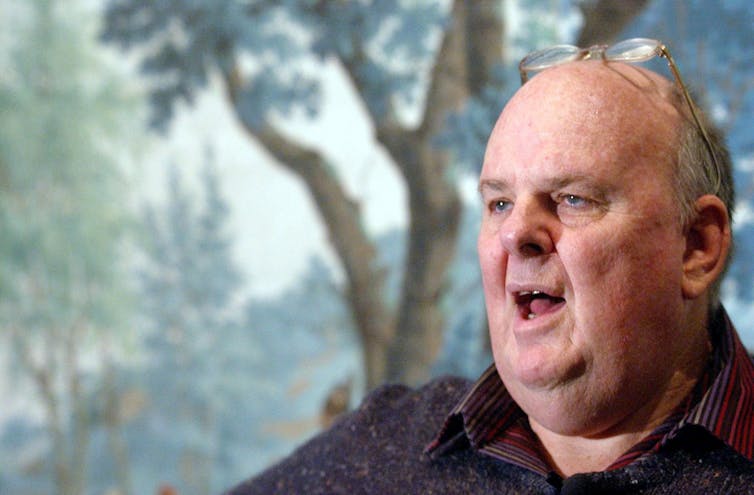
There are so many strange serendipities, and antipathies, forged across Les Murray’s work, verbal, historical and spiritual. In Continuous Creation also, Murray’s last, posthumous book (published almost three years after he died in a nursing home in Taree) these counterpoints and challenges await readers, mostly in gentle forms.
There is the sometimes visceral dissecting and reforming of contradictions; the verbal joy in paradox and pun; the delicacy co-existing with the broad vernacular; the hallelujah with the rage.
Review: Continuous Creation: Last Poems - Les Murray (Black Inc)
The past is imagined as “a receding star” before which the poet submits, waiting, in a place where “flesh tells what mind forgets”.
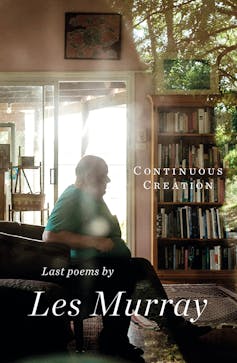
Wounds do return, and it seems necessary for the poet to wait and resurrect the injuries, “all the strappy wars/you aren’t forgiven for … waiting for the past/and the receding star/burns through flesh afresh.” Is this a victory, this recovering of the past and its wounds? It gives history and memory a stringency.
Differently, the title poem Continuous Creation, invokes not the pricks of history but the ongoing, the seamless, the fluid, adopting a humble stance before the rigors of time and mortality:
We bring nothing into this world
except our gradual ability
to create it, out of all that vanishes
and all that will outlast us.
This poem reveals, delicately, gnomically, the ontological paradox of human knowledge: an understanding of human finiteness nesting at the very heart of creative presence and power.
In Murray’s verse, this does not equate with Samuel Beckett’s black humour in Waiting for Godot: “Astride of a grave and a difficult birth, the grave-digger puts on the forceps”. Rather, Murray’s poetry is Blakean, capturing angelic loveliness at the crux of the earthly and earthy.
He sees Earth, with its
Crepe myrtles from China branch heavy with mauve and rain,
black waterfowl moving ghostly
in grass to the scarlet of their brows…(Break of Autumn)
This is the Murray even Murray-sceptics admire: attentive, synthesising (“mauve and rain”), delicately detailed describer of the earth, someone who has lived and written for so long in place, in the country, someone who intimately celebrates, again and again, invoking “continuous creation”. The poise of this alliteration! The active agency of the natural world.
For Murray, the deficits of human life – its cruelties, bodily agonies, feuds and hatreds, so powerfully probed and catalogued in earlier poetry – can also be, late in life, sites for play, wit and experiment. The big man extracting himself from a small car (Metal Birth) is bizarrely funny and rhythmically spry:
…He then
dips his face from under
the dash, up into view,
grinning at the end of an eclipse
and writhes upright, balancing, complete.
There’s slapstick here, a vaudevillian verve in that grinning. But the “big man leaving a small car” also “writhes”. We are reminded, just briefly, that a poem like this is also built on – made possible by - so many younger Murray poems about his fatness, his being bullied, his self-diminishments, poem and man bound painfully together.
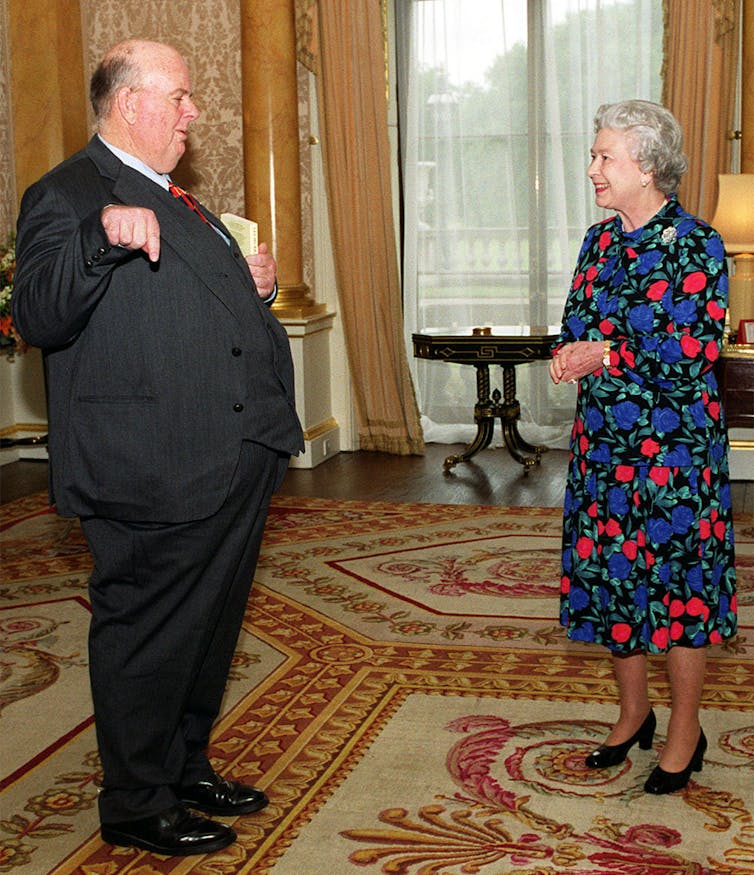
Enraged Preacher
Some of these poems Murray was working on when he died, others are new work discovered among his scrapbooks and files.
In this posthumous collection we are presented with another kind of contrapuntal Murray motion too. The imagination that can capture “black waterfowl moving ghostly/in grass to the scarlet of their brows” can also soar above ground level, can look down with the hauteur of the cultural warrior, the enraged preacher:
… This is the culture:
no history but the Allied,
nothing strange. No poetry.
All’s preserved slow TV
selling no local memoirs,
no spirit, no religion,
no theory, little foreign
except tourist guides,
no languages at all
only ever middlebrow,
the culture of habitual(Half-price hardback).
If you were being cruel you might refocus the glare of cultural hauteur in those tight, little lines back on the speaker/poet here: his habitually elitist generalising (“This is the culture”), his promotion of strangeness and difference, even as he speaks comfortably from his many years as the “Bard of Bunyah”.
His repeated moan is that poetry has been dethroned - yet here he is, writing poetry, using it to speak to the (deaf?) nation, recognised internationally, holding up his T.S. Eliot Poetry Prize, his Queen’s Gold Medal for poetry, his more than 30 volumes of poetry. In a 2003 Guardian review, poet Peter Porter wrote of Murray’s polemicising:
A skewer of polemic runs through his work. His brilliant manipulation of language, his ability to turn words into installations of reality, is often forced to hang on an embarrassing moral sharpness. The parts we love – the Donne-like baroque – live side by side with sentiments we don’t: his increasingly automatic opposition to liberalism and intellectuality.
It’s curious how Porter’s review assumes an audience which naturally agrees with the reviewer while blushing at Murray’s “embarrassing moral sharpness”. One could imagine the gruff (perhaps even gleeful) dismissal by Murray, if and when he had encountered Porter’s argument. Being strange and out of step was pretty much Murray’s métier. Or at least one strain of it.
It is what, in part, fuels Murray’s linguistic play, his twisting and refashioning of words and rhymes and images into strangeness, and at other times into the deeply familiar. Australian English has never been treated more cavalierly, but also more reverently.
J.M. Coetzee, in a marvellously balanced 2011 essay, The angry genius of Les Murray refused to buy into what he calls the “myth” of Murray the lonely outsider:
The time has perhaps come for Les Murray to let go of old grudges. Now in his seventies, he has received many public honors and is widely acknowledged to be the leading Australian poet of his generation. His poems are “taught” in schools and universities; scholars write learned articles about them. He claims that he is read more abroad than at home.
This may or may not be so. But even if it were true, he would not be the first writer to suffer such a fate; and it’s a better fate than not being read at all. If there are a handful of purists who for political reasons will have nothing to do with him or his works, so much the worse for them — the loss is theirs.
These words have a melancholy resonance now, in the face of Murray’s death, aged 80, on April 29, 2019. We won’t hear, afresh, Murray’s strident, passionate rallying cries, whether we agreed with them or not. Yes, Les Murray overstepped. He was an idiosyncratic ideological warrior. He wasn’t Aboriginal, but earlier on was accused of appropriating Aboriginal identity (see Ben Etherington, The Living and the Undead).
He could be fiercely oppositional - to city dwellers, feminists, academics, secular society. He was a deeply religious man in what he felt was an irreligious, unpoetic, habitual culture. From his quiet, sustaining home in rural NSW, and in his refusal to enter the digital world, Les Murray probably did not see the many ways in which Australia was changing.
But he did create “out of all that vanishes/and all that will outlast us” a linguistically teeming, ludic, spiritually provoking and mesmerising body of poetry, to which we are privileged to have access.
Coetzee is the kind of critical reader (let alone Nobel Prize winning novelist) Murray (and all authors) deserves. He may not agree with all (or any) of Murray’s politics, or his theology, and he’s not alone in that, but Coetzee knows what a fine, passionate, inventive poet Les Murray was and is.
Continuous Creation: Last Poems offers a poet’s gentle, gracious bow of farewell, and just a few barbs with which to leave us.![]()
Lyn McCredden, Personal Chair, Literary Studies, Deakin University
This article is republished from The Conversation under a Creative Commons license. Read the original article.
Saint Olga of Kyiv is Ukraine’s patron saint of both defiance and vengeance

The past few days have seen a spate of videos showing Ukrainians and their president defying an onslaught of Russian aggression. Who could fail to be moved by the video of a Ukrainian woman confronting an armed and jackbooted soldier, telling him to put sunflower seeds in his pockets so at least sunflowers will grow where he dies.
Or President Zelenskyy’s heroic selfies from Kyiv’s front line, which inspire far more widely than just among his countrymen?
Ukrainians are used to adversity and they have a special medieval role model who personifies their bravery in the face of hardship. The Mongol horde destroyed her tomb in Kyiv in 1240 but a Ukrainian Orthodox cathedral dedicated to her was consecrated there as recently as 2010.
Olga of Kyiv, consort of Igor, second ruler of the Rurikid dynasty, is today recognised as one of Eastern Orthodoxy’s greatest saints. A fierce and proud woman who protected her young son and avenged her husband’s death, she was a crucial figure in the consolidation of the medieval kingdom of Kyivan Rus’ as a political entity and in its peoples’ conversion to Christianity.
Olga was born to Viking parents in Pskov, northern Russia, around the turn of the 10th century. She married Prince Igor young and may have been only 20 when the Drevlians, a neighbouring tribe, rose up against his rule and murdered him.
The Byzantine chronicler Leo the Deacon gives gruesome details of Igor’s killing: he was tied to two tree trunks which were then released so his body was split in two. Leo’s account may have been embellished (the ancient historian Diodorus of Sicily in fact tells a similar tale), but Igor’s death still left his wife and three-year-old son alone and potentially helpless in a particularly dangerous and brutal corner of the medieval world.

Burying Her Enemies
Olga’s legend was born of her actions in the weeks and months that followed. The Drevlians sent her emissaries to suggest she marry their leader Prince Mal. The Primary Chronicle, an 11th-century manuscript which is our main source for what follows, records Olga as greeting them deceptively, apparently to bide for time.
The account may be part-fictitious or at least exaggerated. Yet that is not the point: in medieval hagiography it is the morality of the tale that matters most.
“Your proposal is pleasing to me”, Olga told her interlocutors. “Indeed, my husband cannot rise again from the dead. But I desire to honour you tomorrow in the presence of my people. Return now to your boat, and remain there […] I shall send for you on the morrow […]
The hubristic Drevlian delegation took her at her word gleefully. But what they did not know was that she had arranged for a trench to be dug into which they and their boat were flung.
They were buried alive.
Olga summoned a second Drevlian embassy before the rest of the tribe had had time to learn of the first one’s fate. When they arrived she commanded her people to draw a bath for them.
The Drevlians then entered the bathhouse but Olga ordered the doors to be bolted and the building set ablaze.

For a third reprisal, Olga went to the place where the Drevlians had killed her husband, telling those present she wished to hold a funeral feast to commemorate him. Once the Drevlians were drunk and incapacitated she had her men massacre them.
Finally, she laid siege to the Drevlians’ base at Iskorosten (the modern-day Ukraine city of Korosten). She tricked those inside the city with an offer of peace: all they had to give up were three pigeons and three sparrows from each house.
But when Olga had the birds in her possession she had her men tie a sulphurous cloth to one of each one’s legs. The birds flew back to their nests for the night and the sulphur set every building on fire simultaneously.
Olga ordered her soldiers to catch everyone who fled the burning city so they could be extirpated or taken into slavery.
Her revenge for her husband’s death was at last complete.
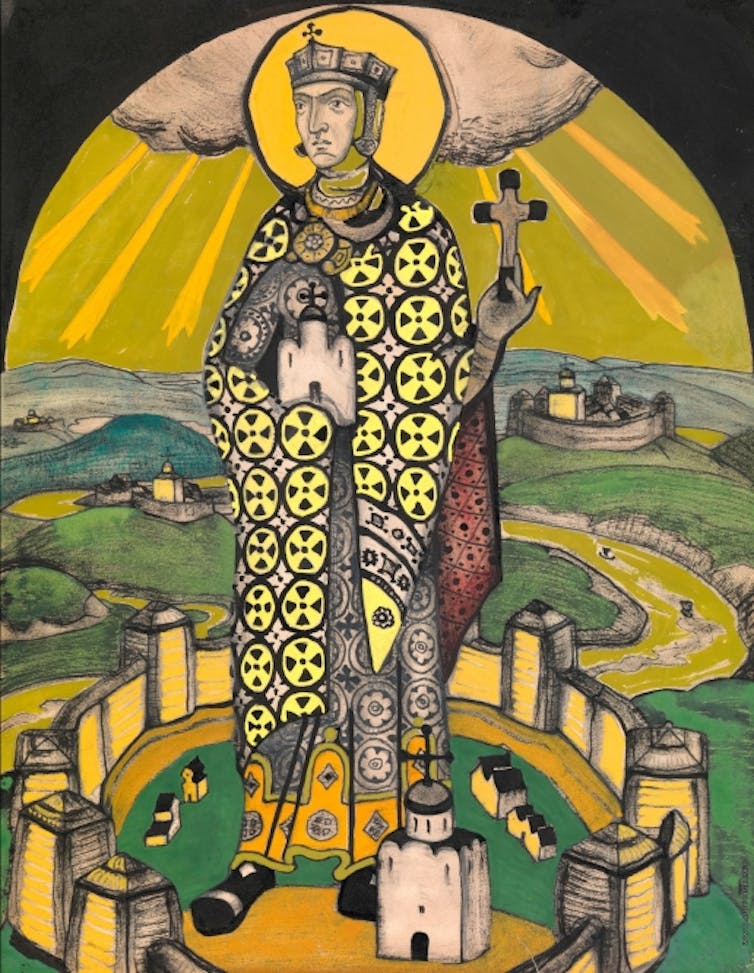
Channelling St Olga’s Spirit
Olga lived a further 25 years, residing in her son’s capital of Kyiv. She was instrumental in persuading him not to abandon the Ukrainian lands for "better prospects” further south on the Danube’s bank. Her grandson, Volodymyr the Great (c.958-1015), then expanded the kingdom into what is now seen as the first Russian principality (which Vladimir Putin now views as the forerunner of the imperial Russian state).
Volodymyr too is acknowledged as a saint for his role in completing the Christianisation Olga had started.
Olga’s Mad Max-style ventures ought to grate with us a bit today: the modern world really shouldn’t be a site of such bloodshed. That is why Russia’s sudden large-scale invasion into a peaceful country strike us as so shocking.
Yet Olga’s memory can clearly still provide an important focal point for Ukrainian resolve.
The Eastern Orthodox and Greek Catholic Churches recognise her with the venerable and extraordinary title “Isapóstolos”: Equal to the Apostles. She and Kyiv’s patron saint, St Michael the Archangel, remain key figures of intercession among those who need comfort in an hour of greatest need.
And Olga’s Christian faith, acquired during a visit to Byzantium late in life, can sustain others now just as it sustained her after her own tribulations.![]()
Miles Pattenden, Senior Research Fellow, Institute for Religion and Critical Inquiry, Australian Catholic University
This article is republished from The Conversation under a Creative Commons license. Read the original article.
‘An ever-ticking clock’: we made a ‘time crystal’ inside a quantum computer

You probably know what a crystal is. We’ve all seen one, held one in our hands, and even tasted one on our tongue (for instance sodium chloride crystals, also known as “salt”).
But what on earth is a “time crystal”, if not a sci-fi gadget in the latest Marvel movie? Why do we need a quantum computer to make one? And what is a quantum computer anyway?
Bits And Qubits
Let’s start there. Computers are all around us. Some are compact, portable and primarily used to stream Netflix, while others fill entire rooms and simulate complex phenomena like the weather or the evolution of our Universe.
Regardless of the details, on a fundamental level computers all have the same purpose: processing information. The information is stored and processed in “bits”.
Any physical system with two identifiably distinct states (call them “0” and “1”) can serve as a bit. Connect lots of bits together in the right way and you can do arithmetic, logic, or what we generally call “computation”.
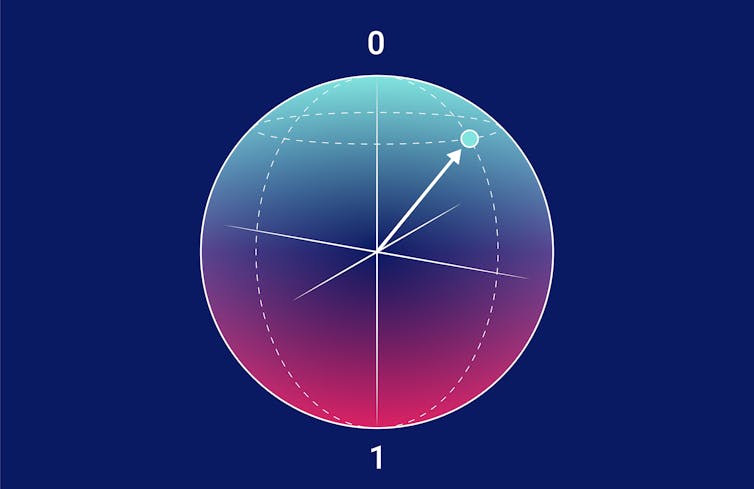
Now, it turns out that the physical world on a very fundamental level is governed by the strange rules of quantum physics. You can also make a quantum version of a bit, called a quantum bit or “qubit”.
Qubits can also be described in terms of two states, “0” and “1”, except they can be both “0” and “1” at the same time. This allows for a much richer form of information processing, and hence more powerful computers.
What Can We Do With Quantum Computers?
Much of the current research in this area is focused either on building a working quantum computer – a challenging engineering task indeed – or on designing algorithms to do things we can’t manage with our current, classical computers.
Our research, however, is focused on an application first envisioned by the famous US physicist Richard Feynman more than 30 years ago: to use quantum computers to conduct research in fundamental physics.
As theorists, we typically use a combination of pen-and-paper mathematics and computer simulations to study physical systems. Unfortunately, conventional computers are very ill-equipped for simulating quantum physics.
This is where quantum computers come in. They are already quantum in nature and can, in principle, behave like any quantum system we wish to investigate.
Using IBM’s quantum computer we were able to achieve precisely that, turning it into an experimental simulator to create a novel state of matter, just as envisioned by Feynman. This machine is located in America but can be accessed remotely by researchers around the globe.
Being able to access quantum computers from anywhere in the world represents a major shift in this kind of quantum research.
Time Crystals
The special type of quantum system we created is called a “time crystal”.
I hope you will not be too disappointed when I say you will probably not get to hold one of these in your hands any time soon. But maybe we can at least understand what a time crystal is!
The crucial idea here is that matter exists in different “phases”, like the three familiar phases of water: ice, water and steam. A material can have very different properties depending on which phase we find it in.

Now a conventional crystal – we might actually call it a “space crystal” - is one such phase of matter. Crystals are characterised by a very regular arrangement of particles in space.
In a time crystal, particles are not only arranged regularly in space, but also in time. The particles move from one position to another and back again, without slowing down or losing energy.
Now this is truly different from what we usually deal with.
Beyond Equilibrium
The types of phases we normally encounter all have on thing in common: they are in “thermal equilibrium”. If you leave a hot cup of coffee sitting on your desk it will transfer heat to its surroundings until it reaches the same temperature as your room, and then it stops and no changes happen from then on.
If you carefully add a layer of cream to your – now unfortunately cold – coffee and begin stirring, you will see changes happen in time. Coffee and cream will mix in beautiful swirls until the whole thing turns into a uniform light brown liquid, and nothing really changes after that.

These are examples of “equilibrium”. The common theme is that things in equilibrium do not change over time.
Our time crystal violates this condition. It actually keeps changing indefinitely, for all eternity, without ever reaching equilibrium.
A Loophole In The Laws Of Thermodynamics?
A time crystal therefore constitutes an out-of-equilibrium phase - in fact, it is one of the first examples of such a strange state of matter. It is essentially like an ever-ticking clock that neither loses energy, nor requires a supply of energy to keep going.
This seems dangerously close to a perpetual motion machine, which would violate the laws of thermodynamics.
But the first law of thermodynamics – which says energy is not created or destroyed - is not in any danger here, as we can’t extract energy from a time crystal while also keeping it running.
The second law states that things left to themselves can only become more disordered over time. This concept is probably all too familiar to anyone with kids or housemates.
But there is a loophole. The second law forbids things from becoming more ordered with time, but it doesn’t say they can’t maintain their current level of disorderedness forever.
In everyday life, we don’t see this loophole in action. It is the equivalent of stirring away at your coffee and cream and finding that the swirling tendrils of cream never fully mix with the coffee.
This is what time crystals do. We don’t see it in everyday life because it really is a quantum phenomenon.
Beyond Time Crystals
Quantum computers are still in their infancy. But as they improve they will allow physicists like us to improve our fundamental understanding of nature.
This in turn may translate into technological innovation, just as the physics of the last century enabled the digital revolution that shapes our lives today.
Quantum computers provide a platform for physicists to engineer and investigate novel states of matter that cannot be found in nature. Time crystals just mark the beginning of this exciting endeavour.![]()
Stephan Rachel, Associate Professor and ARC Future Fellow, The University of Melbourne and Philipp Frey, PhD student, The University of Melbourne
This article is republished from The Conversation under a Creative Commons license. Read the original article.
Mike Sheahan Receives Lifetime Achievement Award
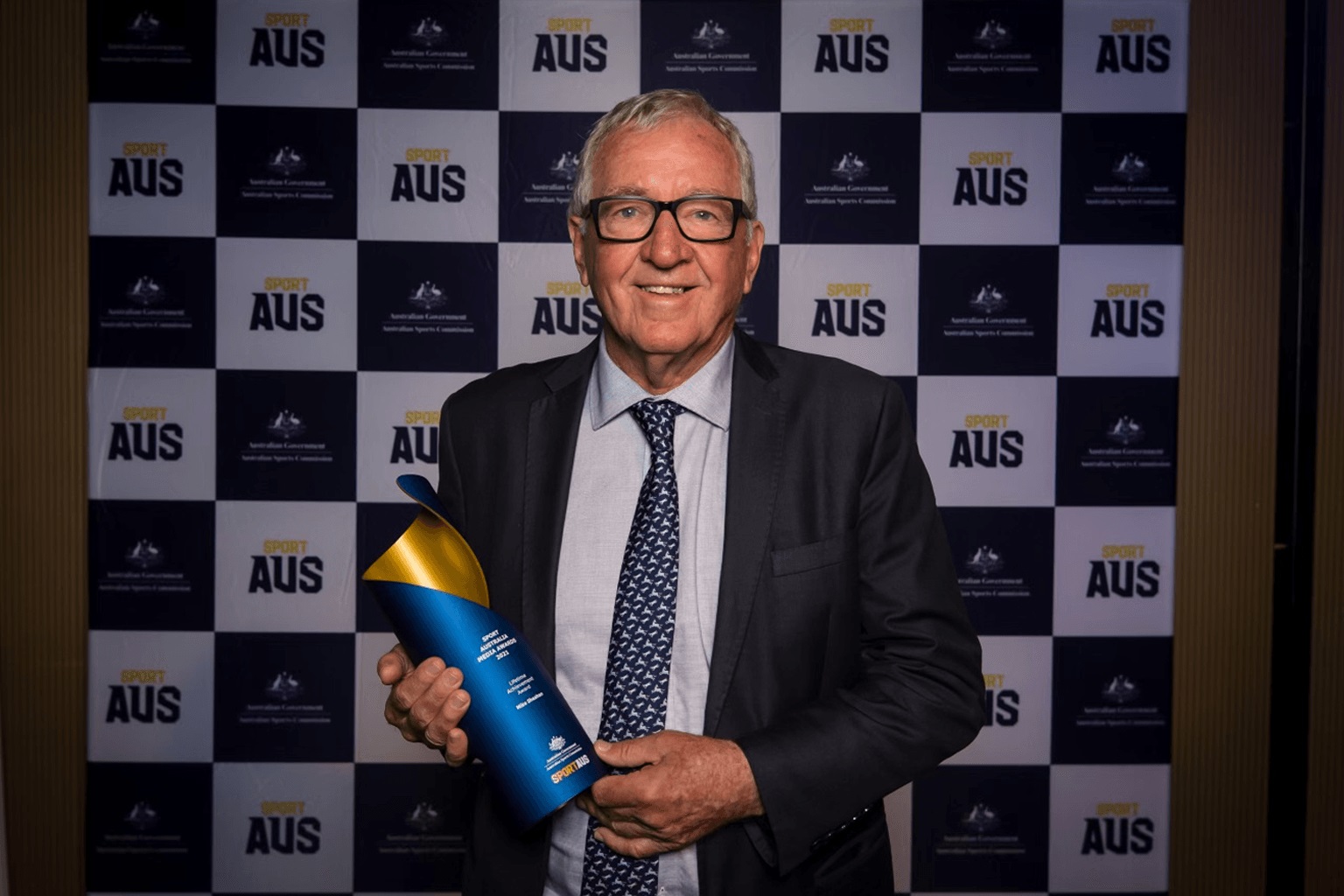
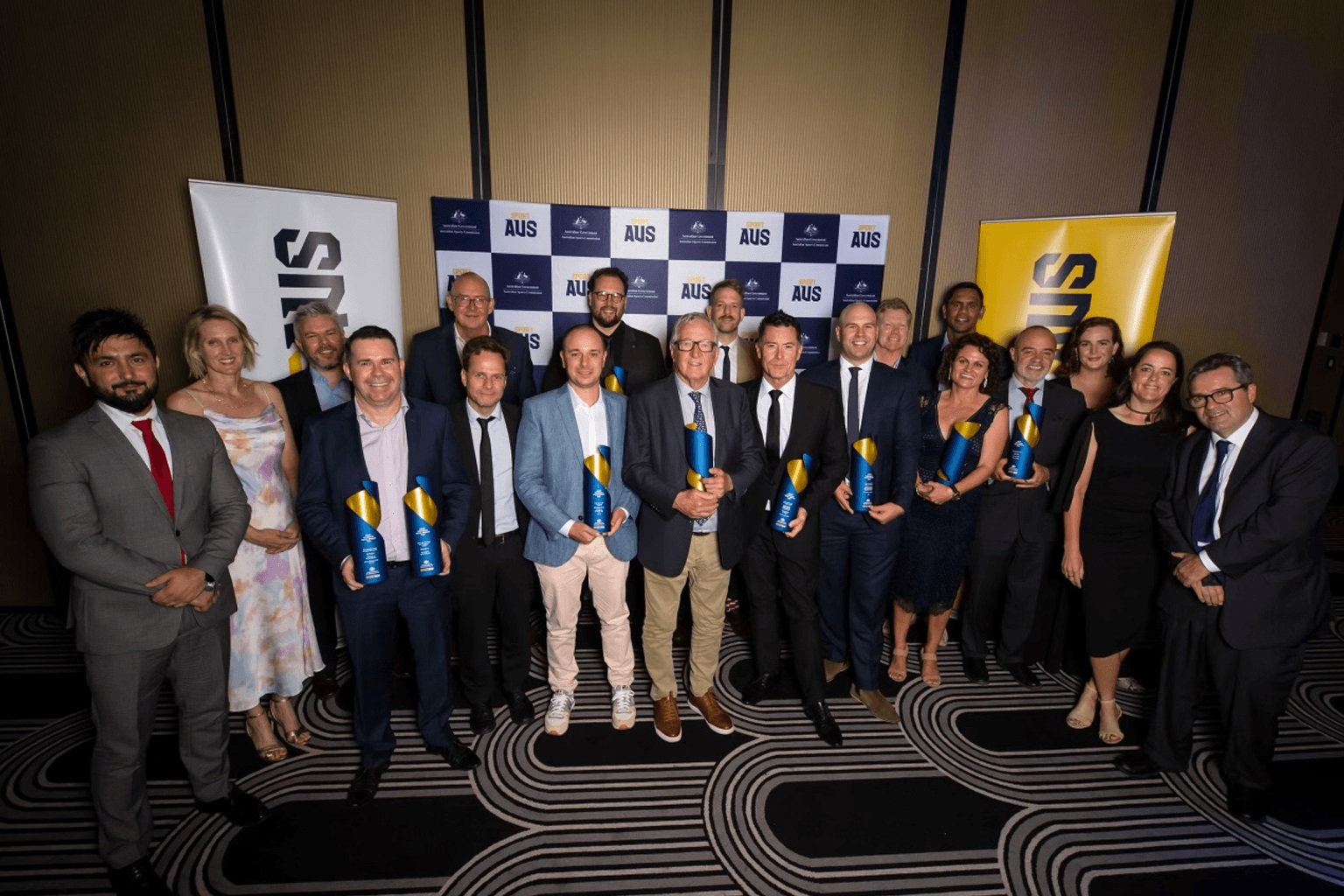
Sudden mould outbreak after all this rain? You’re not alone – but you are at risk
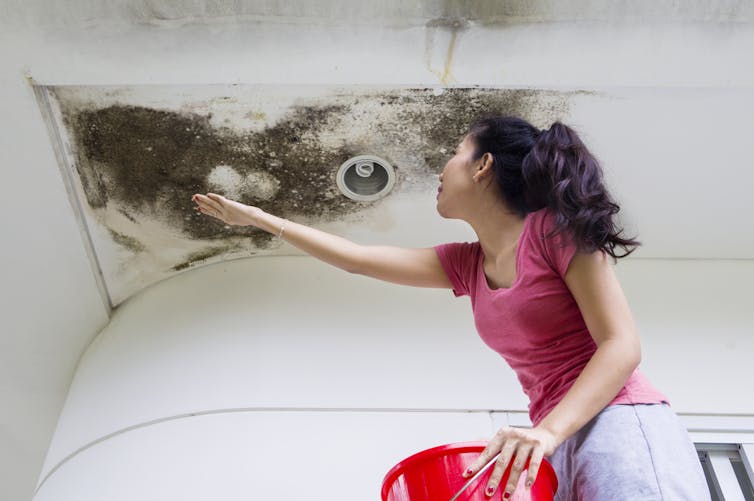
Recent torrential rain along the east coast of Australia has sparked renewed fears of mould in people’s homes, which can cause dangerous health problems. Many flood-affected residents in northern New South Wales and Queensland will also be contending with mould as part of the post-flood cleanup.
Moulds are fungi – microbes like viruses or bacteria. There are some microbes in every building and they’re usually harmless.
In a damp or water-damaged environment, however, toxic mould species grow and release spores that can cause health problems if inhaled.
Here’s what you need to know.
More Than Just Lungs: Mould Can Affect Health In Other Ways
Many of us know someone whose asthma is triggered by exposure to mould. But even non-asthma sufferers are at risk.
Research shows dampness, mould and related airborne particles are associated with a range of adverse health outcomes, including increased risks of asthma, allergies, and respiratory infections and symptoms.
A parliamentary Inquiry into Biotoxin-related Illnesses in Australia noted the need for further research into mould prevalence, mould measurement and the potential health effects of exposure to damp and mould.
Some research suggests people exposed to mould in their homes report more severe depression and anxiety symptoms. Of course, this association isn’t just about mould, and worsening mental health is likely to do with a range of factors associated with living with damp and mould, including poor housing condition, poverty, and general ill health.

Mould Hot Spots In Australia
The World Health Organisation advises no level of exposure to mould can be considered safe for health. It says dampness and mould-related problems should be prevented and remediated early to avoid potentially harmful exposure.
Despite this strong advice, mould is a common problem in Australia. Until recently, not much has been known about mould prevalence, with the official WHO guidelines on indoor air quality estimating 10-50% of Australian homes are affected by dampness and mould.
We can also make an estimate using the large-scale Australian Rental Housing Conditions Dataset, which collates robust data collected from over 14,000 rental households in 2020.
Our analysis of this data set shows 27% of renters say their current home has problems with mould and 21% report problems with dampness.
Mould is often found in the south eastern states of Australia due to a combination of lower temperatures and damp weather. It is also a problem in New South Wales and Queensland, where 39% and 26% of regions respectively have a high prevalence of mould in rental homes. Sydney has more mould than Melbourne.
We have mapped the data for Melbourne, Sydney and Brisbane here:
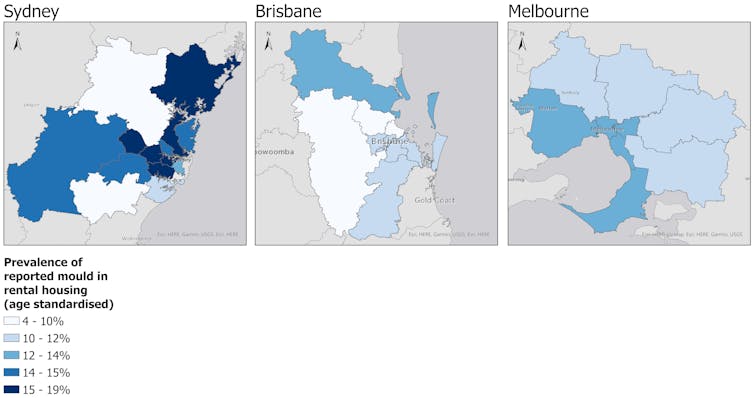
You’re also more likely to find mould in poorly maintained, low-income housing. These poor housing conditions are more common among people who already experience health issues.
Children are another group at higher risk of living in housing with mould – 33% of people living with two or more children reported mould in the Australian Rental Housing Conditions Dataset (compared to 27% of childfree households).
Other risk factors for mould included roof and plumbing defects, and the need for urgent repairs.
Building Codes And Rental Policy Can Help
Mandated building standards are important to ensure design, building and maintenance sufficiently address mould growth.
Our current building codes do not focus on preventing damp conditions. In fact Australia’s National Construction Code previously inadvertently promoted moist indoor environments by solely focusing on well-sealed, energy-efficient buildings.
The National Construction Code is to be updated in late 2022. Hopefully, the new code will directly address the mould-promoting condensation problem caused by measures to increase energy efficiency in buildings.
New builds, of course, don’t house the whole population. Almost a third of Australian households rent, and this includes older homes with a range of structural issues. Policies targeting renters and landlords could have a significant impact on population health.
While tenancy regulations vary across Australia, some states and territories have begun to address the issue of mould in rental housing.
For example, the recent Victorian rental reform mandates premises:
must be free from mould and damp caused by or related to the building structure.
It allows tenants to log an urgent repair request where issues, such as leaking roofs or plumbing, lead to mould.
Since there are no accepted standards for mould measurement or remediation, legislation referring to “mould and damp” may not end up improving housing conditions.
An agreed definition of what level of mould is harmful, and how it can be measured, would allow governments to set cut-offs above which homeowners are compelled to intervene.
What Can You Do About Mould In Your Home?
Prevention is more efficient than removal. The key is keeping the house dry and free of dust. Make sure you:
fix leaks, including roofs and walls as well as plumbed appliances such as dishwashers
increase ventilation and air circulation with windows and fans
use extractor fans when cooking, bathing or drying laundry
use a dehumidifier
clean condensation from inner windows.

If mould has already set in, the best option is to remove it physically with a microfibre cloth.
Mould remediation is complex and often best undertaken with professional advice. Australian state and territory governments provide advice on dealing with dampness and mould in the home.
For example, see advice sheets from the Victorian Department of Health, NSW Health and the Queensland government.
This explainer by the Healthy Housing Centre of Research Excellence on mould and damp also provides information on where you can seek help.![]()
Rebecca Bentley, Professor of Social Epidemiology, Principal Research Fellow in Social Epidemiology and Director of the Centre for Research Excellence in Healthy Housing in Melbourne School of Population and Global Health, The University of Melbourne and Ang Li, Research Fellow, The University of Melbourne
This article is republished from The Conversation under a Creative Commons license. Read the original article.
Japanese encephalitis virus has been detected in Australian pigs. Can mozzies now spread it to humans?
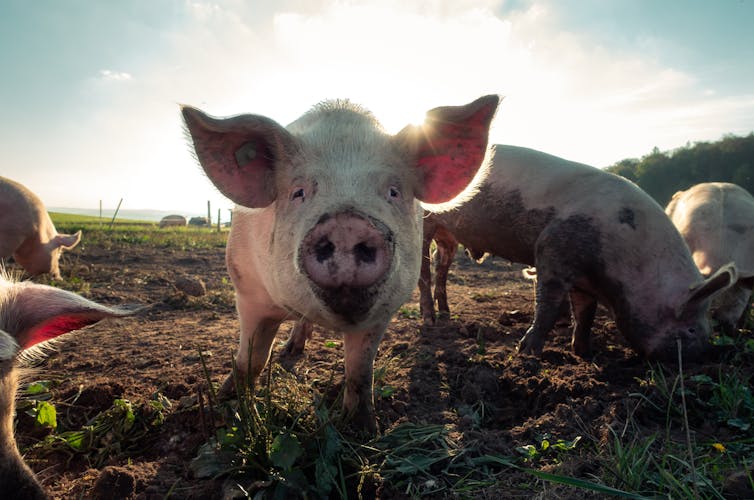
With our summer dominated by wet weather and booming mosquito populations, health authorities have been alert to the threat of mosquito-borne disease.
One such disease is Japanese encephalitis virus, which has been detected for the first time in southeastern Australia. It has been found in pigs at pig farms in Victoria, New South Wales and Queensland, indicating the virus is likely circulating in the local mosquito populations, which could infect humans.
Ongoing rain and flooding ensures suitable conditions for mosquitoes will persist well into Autumn.
What Is Japanese Encephalitis Virus?
Japanese encephalitis virus is part of the flavivirus family, closely related to West Nile, Zika, Murray Valley encephalitis, dengue and yellow fever.
An estimated 68,000 cases of encephalitis occur annually across Southeast Asia and Western Pacific regions.
The virus is maintained in a cycle between mosquitoes and waterbirds. Pigs are also an important host, especially where pigs, mosquitoes, waterbirds, and water bodies all occur together.
Outbreaks are more likely to occur during the wet season.
How Serious Is Japanese Encephalitis?
Most infected people have mild illness or no symptoms at all. Symptoms of fever, joint pain, and rash are common but severe cases also experience headache, neck stiffness, confusion, seizures, and sometimes coma and death.
Less than 1% of those infected will develop a severe brain infection, encephalitis, which may be fatal.
The disease is particularly problematic in children, with survivors often left with significant brain injuries.
To confirm infection, cerebrospinal fluid (that surrounds the brain and spinal cord) and blood are tested by specialised public health laboratory.

Why Has Japanese Encephalitis Virus Appeared In Australia?
Outbreaks of Japanese encephalitis virus have occurred in countries neighbouring Australia’s north, including Papua New Guinea and Indonesia.
Concern has often been raised about the potential introduction and spread of the virus onto the Australian mainland, given the high populations of mosquitoes, wild pigs and waterbirds in the north.
During outbreaks of Japanese encephalitis virus in Torres Strait during the 1990s, the virus even spread to the Cape York Peninsula. But the virus didn’t take hold and the last definitive evidence of activity on the mainland was in 2004.
Now the virus is back. A new incursion occurred in early 2021, when a human case was diagnosed in the Northern Territory.
Now there is evidence of Japanese encephalitis virus in pigs in multiple pig farms in New South Wales, Victoria and Queensland. And there is a risk of transmission to humans.
How Did The Virus Make Its Way South?
Investigations are underway to work out how much virus is in the region and assess the ongoing risk to human and animal health. But we will never definitively know how (or when) the virus managed to move south.
It could be linked to overlapping transmission cycles fuelled by favourable weather conditions that bring water to flood plains, wetlands, and other habitats shared by mosquitoes and waterbirds. Or it could be due to migration of infected birds or mosquitoes.
There is little doubt the La Nina-dominated weather patterns that impacted southeastern Australia over the past two years played a role.
The spread of mosquito-borne viruses, such as Murray Valley encephalitis virus, from northern Australia to southeastern Australia has been documented before. We just never expected Japanese encephalitis virus to take this pathway too.
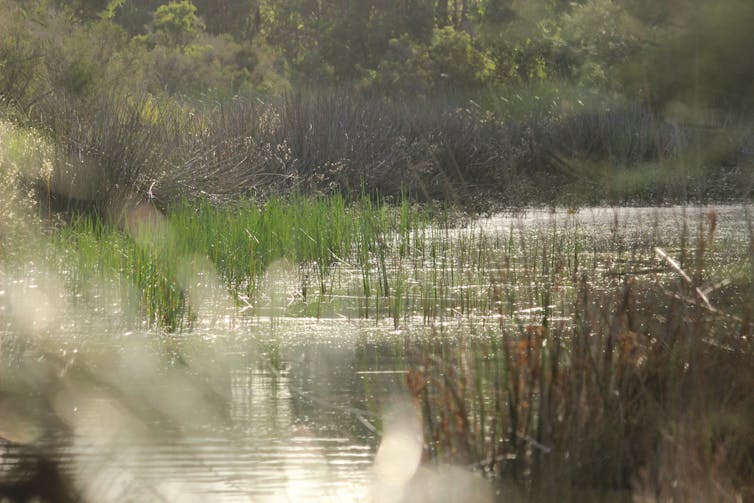
How Can You Avoid Catching Japanese Encephalitis Virus?
A vaccine is available to protect against Japanese encephalitis virus. This has been demonstrated as an effective way to prevent disease outbreaks.
Some Australians have been vaccinated but it hasn’t been a routine part of international travel, even to countries where the risk is high.
Consideration could be given to vaccinating at-risk groups in Australia.
Reducing further transmission of the virus to people will rely on the use of insecticides around high-risk locations, such as piggeries where infections have been identified, and the use of personal protection measures against mosquito bites.
Fortunately, the steps we routinely take to avoid mosquitoes bites during the Australian summer will work just as well against the mosquitoes likely to be carrying the virus. People just need to be more vigilant to protect themselves and family against mosquito bites.
Health authorities are recommending a number of steps to avoid mosquito bites. Minimimse time outdoors when mosquitoes are most active, especially dawn and dusk. Wear a long sleeved shirt, long pants and covered shoes. Apply a topical insect repellent containing Diethyltolumide, picaridin, or oil of lemon eucalyptus.
The weather has clearly contributed to this outbreak but it may also assist ending it. The onset of cooler weather in autumn will slow mosquito population growth and once winter arrives, most of the mosquitoes across southern regions of Australia will disappear. At least for a few months.![]()
Cameron Webb, Clinical Associate Professor and Principal Hospital Scientist, University of Sydney; Andrew van den Hurk, Medical Entomologist, The University of Queensland, and Dominic Dwyer, Director of Public Health Pathology, NSW Health Pathology, Westmead Hospital and University of Sydney, University of Sydney
This article is republished from The Conversation under a Creative Commons license. Read the original article.
Harmless Or Deadly? New Study Examines Evolution Of E. Coli Bacteria
State's Multicultural Champions Named For 2022
Sydney Metro West Tunnelling Contract Awarded
- Twin 9km tunnels from Sydney Olympic Park to Westmead;
- A Tunnel Boring Machine launch site at Rosehill, tunnelling toward Sydney Olympic Park and relaunched toward Westmead;
- A services facility and crossover structure at Rosehill to allow provision for fresh air ventilation and emergency egress;
- Tunnel portal and dive excavation at Clyde Services and Maintenance Facility;
- Earthworks, retaining structures, drainage and utilities corridor for the Clyde Maintenance Facility;
- Excavation and civil works for Parramatta and Westmead Stations; and
- A segment manufacturing facility at Eastern Creek constructing over 60,000 segments.
New Technique Unlocks Ancient History Of Earth From Grains Of Sand
Disclaimer: These articles are not intended to provide medical advice, diagnosis or treatment. Views expressed here do not necessarily reflect those of Pittwater Online News or its staff.